Don’t Get Washed Away: The Real-Talk Guide to a Flawless Beach Wedding
I’ve seen some things over the years as a planner. But one of my first beach weddings? Oh yeah, that one’s seared into my memory. The couple wanted this simple, romantic ceremony on a gorgeous coastline. The photos looked incredible—dramatic rocks, a stunning sunset, the works. What you don’t see in those pictures is the freak gust of wind that launched the bride’s veil straight into the ocean. Or the beautiful ceremony arch that we had to secretly anchor with sandbags hidden in wicker baskets just moments before guests arrived.
In this article
- First Things First: What the Venue Brochure Won’t Tell You
- Pro-Level Tricks for a Setup That Stays Put
- Not All Beaches Are the Same: Coast-to-Coast Differences
- Let’s Talk Money, Outfits, and Guests
- The All-Important Backup Plan (Your Plan B)
- Final Checklist: Top 5 Beach Wedding Mistakes to Avoid
- Inspirational Gallery
Look, the day was a huge success in the end, but it taught me something I’ll never forget: a dreamy beach wedding is about 10% pure romance and 90% hardcore logistics.
So many couples imagine that perfect moment, saying their vows with their toes in the sand. It feels so relaxed and natural in your head, right? But the beach is a wild, unpredictable venue that doesn’t care about your run-of-show. Success comes down to respecting Mother Nature—from the tides and the wind to the blazing sun. This isn’t me trying to talk you out of it! It’s me getting you prepared. With the right know-how, you can pull off a day that feels just as effortless as you dreamed it would be. This is the stuff that separates a truly memorable wedding from a super stressful one.
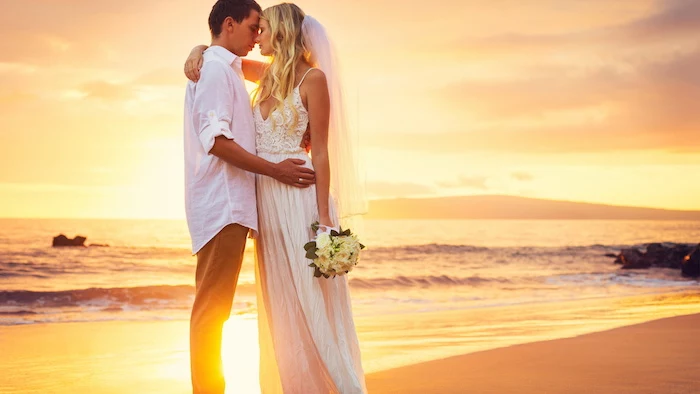
First Things First: What the Venue Brochure Won’t Tell You
Think of the beach as more than just a pretty backdrop; it’s an active, constantly changing partner in your wedding. Honestly, the biggest mistake I see couples make is ignoring these powerful natural elements. It leads to soggy feet, decorations blowing into the sea, and your guests not being able to hear a single word you say.
Tides Are the Undisputed Boss
The absolute most important factor for your ceremony is the tide schedule. It’s not a suggestion, it’s a hard-and-fast rule. I once got a panicked call from a DIY couple who set up their entire ceremony—chairs, arch, the whole deal—during low tide. They didn’t check what came next. As they started their vows, they watched the ocean creep closer and closer until waves were literally licking the front row of chairs. They had to rush through everything. It was a mess, and totally avoidable.
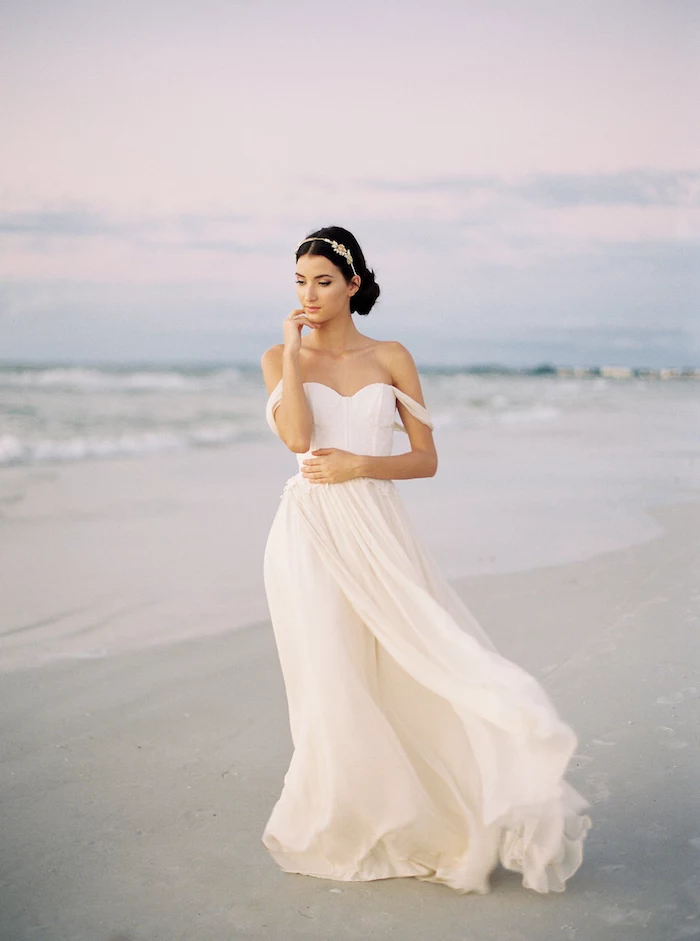
Here’s your action plan: Look up a tide chart for your exact beach on your wedding date. You can use official government weather and ocean sites, but I find that user-friendly apps like Surfline or Tide Charts are often easier to read. You need to find two key times: high tide and low tide. Plan to start your ceremony at least two to three hours AFTER high tide. This ensures the water is moving away from you, giving you the most possible space and a firm, wet sand to set up on. Never, ever plan a ceremony during a rising tide. The water moves way faster than you think.
Work With the Wind, Not Against It
Wind is just a fact of life on the coast. It messes with sound, comfort, and all your pretty decor. So, first, figure out the prevailing wind direction for that location and time of year (a quick search on local weather sites can help). When you set up, position your chairs so the wind is at your guests’ backs or coming from the side. If they’re facing into the wind, they’ll be squinting, their hair will be a mess, and the sound of your vows will be carried away before it ever reaches them.
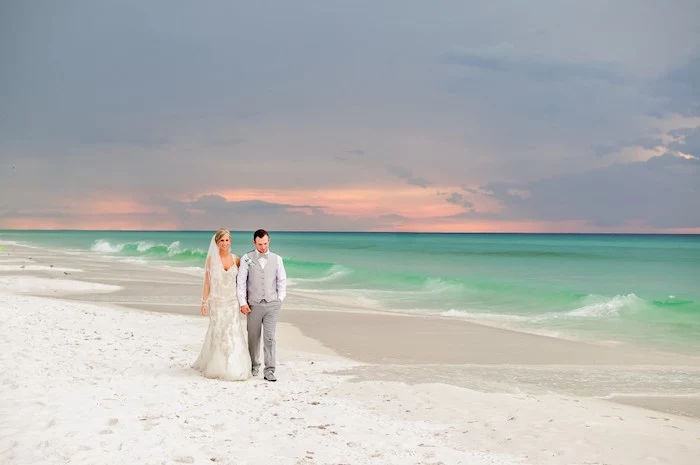
Speaking of sound, this is a big one. The noise of crashing waves and wind will completely swallow your voices. A standard mic on a stand is useless. You absolutely need to use lapel microphones (also called lavalier mics) for the couple and the officiant. And each mic must have a fuzzy windscreen—the pros call them “dead cats”—to block out the wind noise. I often recommend systems like the Rode Wireless Go II because they’re reliable and have great wind protection. For your guests, you’ll need at least two speakers on stands, angled to cover the whole seating area. Without this, only the first row has any clue what’s happening.
The Truth About Sand and Sun
Heads up: not all sand is created equal. Fine, sugary sand is a nightmare to walk on in heels, and rolling equipment carts is basically impossible. Coarse, pebbly sand is easier but can be tough on bare feet. A great solution is to lay down a temporary walkway. This can be a simple roll-out aisle made of bamboo or composite, or even just solid planks. It gives everyone, especially older guests, a stable path from the parking area to their seats.
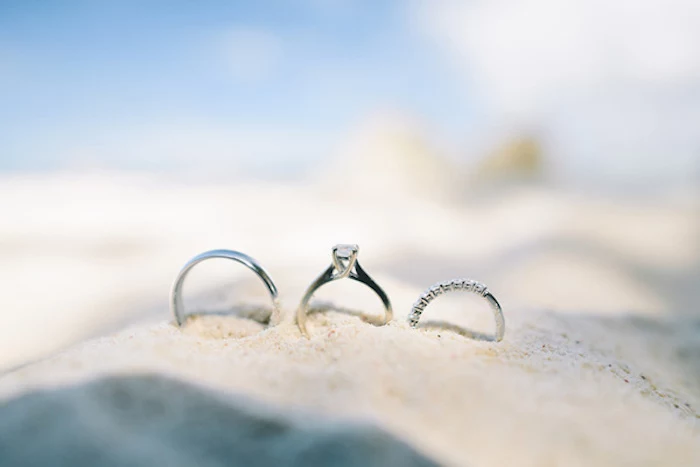
The sun is the other big player. Use a sun-tracking app to see the sun’s path on your wedding day. You want to orient your ceremony so the sun isn’t blasting directly into your guests’ eyes. A late afternoon ceremony is beautiful, but if everyone is facing west, they’ll be staring into a blinding sunset. It’s much better to have the sun to the side or behind them. And please, please provide some shade. Even if the ceremony is in the open, have a shaded spot nearby with drinks where people can cool off before and after.
Pro-Level Tricks for a Setup That Stays Put
The real difference between an amateur beach setup and a professional one is all in the details that keep things from falling over or flying away. These are the tried-and-true methods we use to make sure everything is safe and secure.
Anchoring Your Decor (Seriously)
Anything you put on that sand needs to be weighed down or staked down. A gorgeous floral arch can become a dangerous kite in a strong breeze. For ceremony arches, we use two main methods. The first is to use wide, flat bases that can be weighed down with heavy sandbags (we hide them with fabric or driftwood). The second, much more secure method, is to use stakes. Quick tip: Grab some 36-inch rebar stakes from a hardware store. You’ll need a small sledgehammer to drive them at least 24 inches into the sand for a solid anchor, then you can securely fasten the arch to the stakes with zip ties.
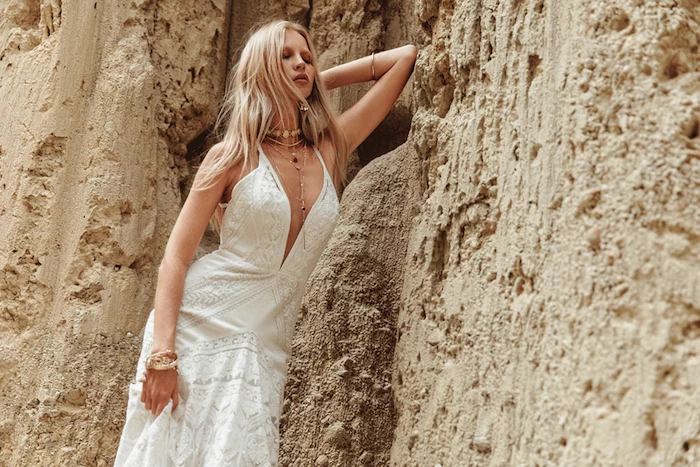
For smaller decor, forget lightweight vases. They’re guaranteed to tip. Instead, use low, heavy containers. A trick I love is to partially fill glass cylinders with sand before adding water and a floating candle. It looks chic and it’s super stable. And if you’re using fabric for an aisle runner or for draping, choose a heavier material like a cotton or linen blend. Lightweight chiffon looks pretty for a second, and then it’s a tangled, whipping mess.
A Smarter Way to Handle Seating
Chairs sink in the sand. It’s just what they do. To prevent your guests from tilting backward, the easiest DIY fix is to place a small, 6×6 inch square of plywood under each chair leg. For a cleaner look, you can run long 1×4 wood planks under the legs of each row of chairs to distribute the weight.
If the budget has some room, the absolute best option is a temporary floor. For a higher-end event, we might bring in a section of elevated decking. It’s a bigger expense, for sure, but it creates a perfectly stable surface and solves all your sand-related problems. If you’re planning a reception with dancing, a proper dance floor on a solid subfloor is non-negotiable.
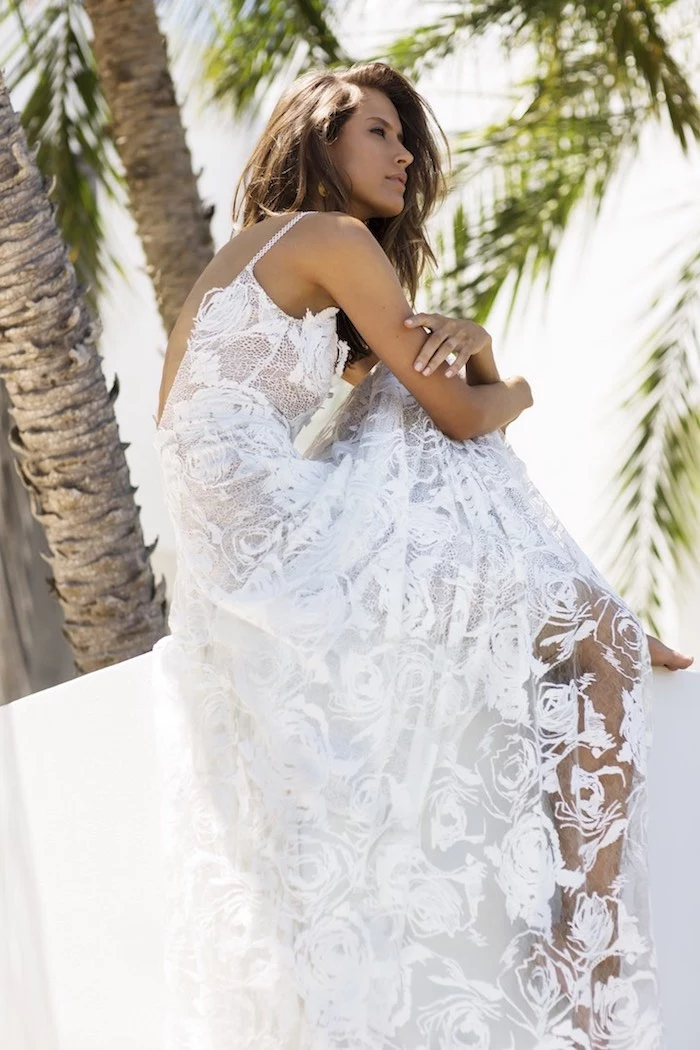
The Guest Comfort Station: A Game Changer
This is the little detail that makes guests feel truly cared for. Set up a small table at the entrance to the beach path with a few essential items. I call it a Guest Comfort Station. Here’s what’s on my go-to list:
- A basket of cheap sunglasses. You can get these in bulk on Amazon or from party suppliers for about $1 a pair.
- High-SPF sunscreen and some aloe vera gel.
- A cooler filled with ice-cold bottled water. Hydration is key!
- A gentle insect repellent, especially if your ceremony is near sunset.
- A shoe station. A cute sign inviting guests to go barefoot, with a shoe rack or cubbies for them to store their footwear.
- A de-sanding station for afterward. This is just a few soft-bristled brushes for guests to dust the sand off their feet. A 10-pack of basic utility brushes from Home Depot will run you maybe $20 and people will love you for it.
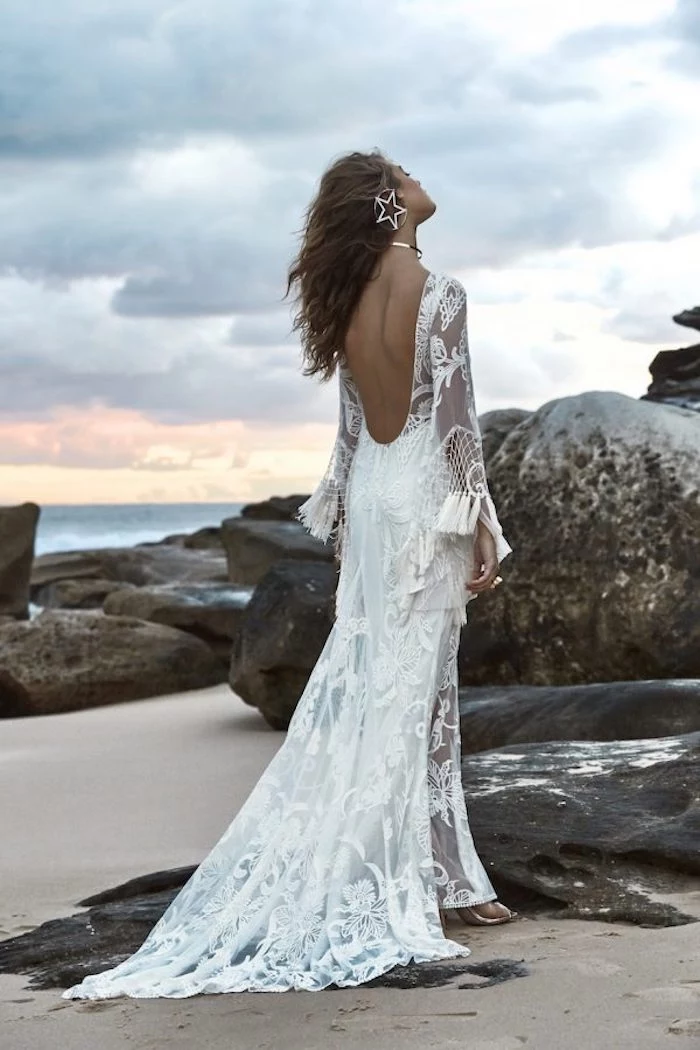
Not All Beaches Are the Same: Coast-to-Coast Differences
I’ve planned events all over, and trust me, a beach in California is nothing like a beach in Florida. It’s so important to understand the local quirks. Instead of a boring chart, let’s just talk about the real-world differences.
The Pacific Coast (California & The Northwest): In places like California, strict state-wide coastal access laws mean most beaches are public. This is great, but it means you absolutely must get a permit, and the process can be complicated, involving multiple agencies. You need to book way in advance. The weather here is also famous for its “June Gloom,” where a summer day can be cool and overcast. Up in the Pacific Northwest, the coast is more rugged and wild. The weather is far less predictable, so a rain plan isn’t a suggestion—it’s mandatory.
The Atlantic Coast (New England to Florida): New England has a short but sweet beach season, and many of the beaches are run by small towns with very strict rules on things like alcohol, noise, and event times. As you head south towards the Carolinas and Florida, you’re entering hurricane season (officially June through November). I would never, ever plan an event here from August to October without a rock-solid indoor backup venue already booked. You also have to be hyper-aware of sea turtle nesting season. Many areas have lighting ordinances that require all lights to be off or shielded after dark to protect the hatchlings, with huge fines for violations.

The Gulf Coast & Beyond: These spots are postcard-perfect, but they come with their own set of challenges. If you’re on an island, remember that everything—from flowers to chairs to generators—has to be shipped or flown in, which seriously jacks up the cost and lead times. The heat and humidity are also intense, which affects everything from wilting flowers to food safety. A tent with portable air conditioning is often a necessary splurge for a summer reception.
Let’s Talk Money, Outfits, and Guests
It’s easy to get lost in the romance and forget about the practical stuff. Let’s bring it back to earth for a minute and talk about what to wear and what this is all really going to cost.
Dressing for the Beach (and Not Regretting It)
A heavy satin ball gown with a cathedral-length train is a disaster on the beach. It will collect sand, water, and seaweed, and it’ll be a heavy, dirty mess in about five minutes. I always guide my clients toward lighter fabrics like chiffon, organza, or a lightweight lace. Sheath or A-line styles are perfect. If you must have a train, get a detachable one you can remove for the reception.
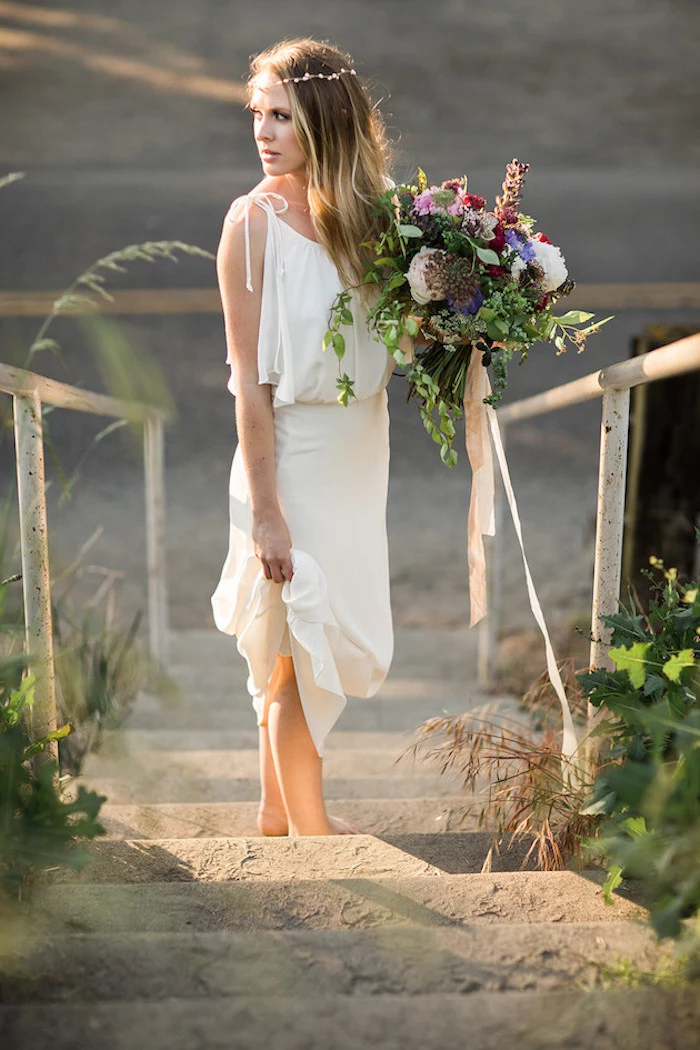
For the guys, a wool tux is just cruel. Linen suits, light cotton, or even just a crisp button-down with linen trousers is the way to go. And for shoes? Stilettos are an absolute no. Wedges are better, but flats, espadrilles, or elegant barefoot sandals are best. Make sure you tell your guests! Be specific on your wedding website. Instead of a vague dress code, say something helpful like: “We recommend linen suits or slacks for the men, and summer dresses for the women. Please avoid stiletto heels, as we will be on the sand!”
The Real Cost of a Beach Wedding
A beach wedding is not automatically cheap. In fact, it’s often more expensive than a traditional venue because you have to bring everything in yourself. A normal venue includes restrooms, power, and a roof. On the beach, you’re renting all of that. Here’s a quick reality check on the hidden costs:
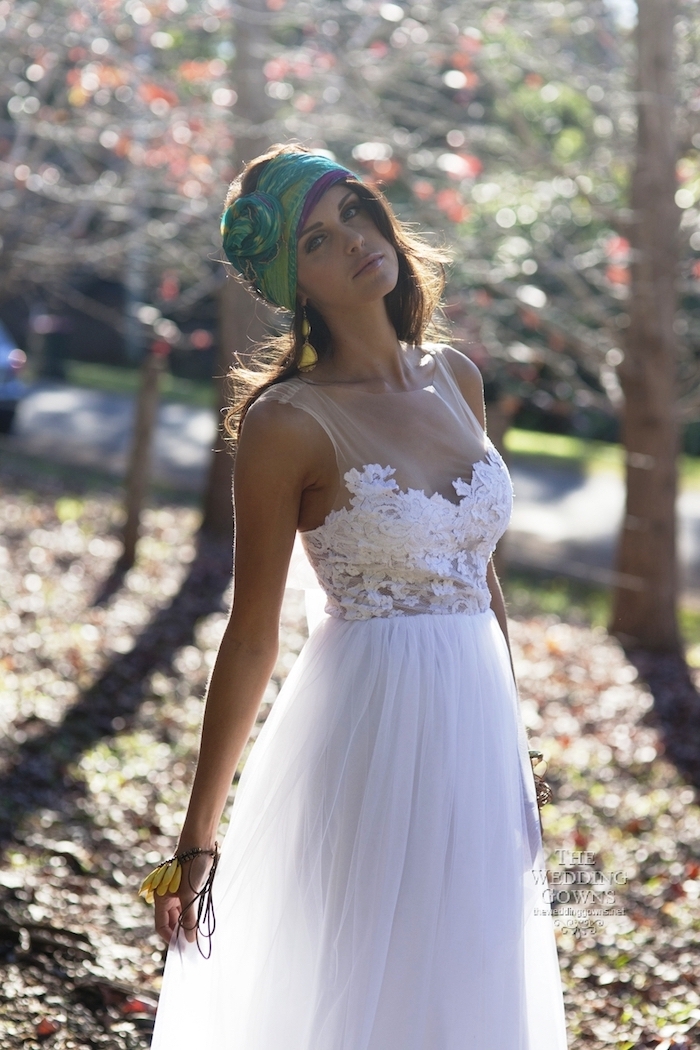
- Permit Fees: These can run anywhere from $150 to over $500 depending on the location and how many guests you have.
- Generator Rental: You need power for sound and lighting. A professional-grade quiet generator rental for the day will likely be $300 to $600.
- Portable Restrooms: Don’t just get a standard porta-potty. You’ll want to rent a high-end restroom trailer with flushing toilets and sinks. Expect to pay $800 to $2,500 for this.
- Lighting: Once the sun sets, the beach is pitch black. Lighting the event space and pathways for safety is a big job that requires a lot of equipment and labor.
- Contingency Plan: Your backup venue isn’t free. You’ll likely have to put down a non-refundable deposit to hold an indoor space, but it’s the most important insurance policy you can buy.
Your Five-Minute Action Step Today
Feeling overwhelmed? Here’s something you can do right now. Find your dream beach on Google Maps. Use the Street View feature to do a virtual walkthrough. Check out the real parking situation, see how long the walk is from the lot to the sand, and look at the access points. It takes five minutes and tells you a ton about the real-life logistics you’ll be facing.
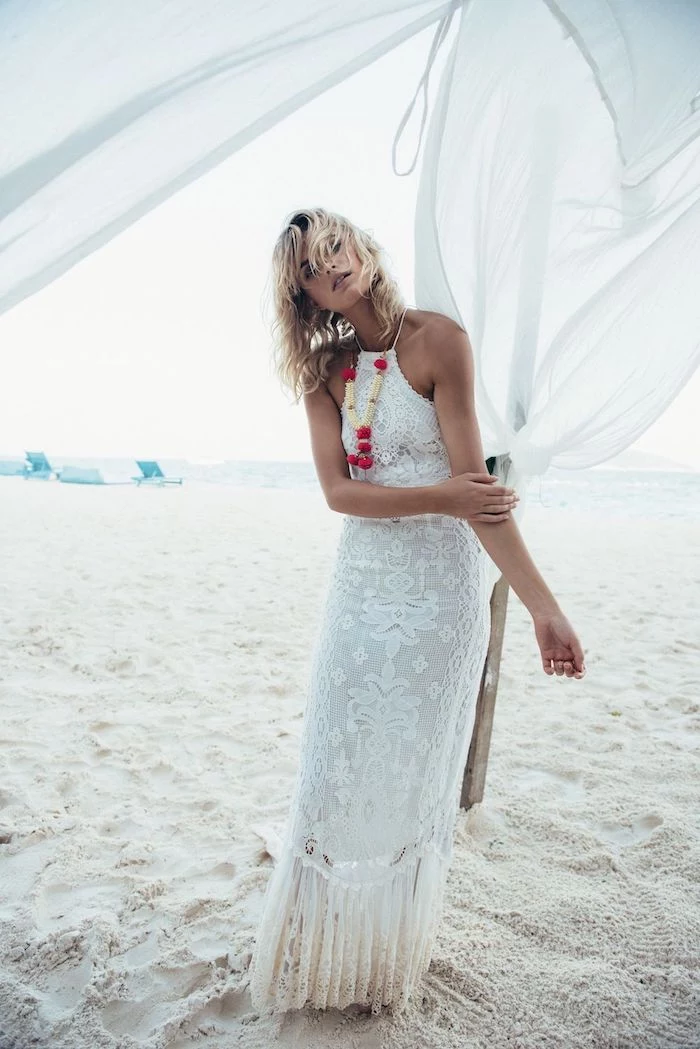
The All-Important Backup Plan (Your Plan B)
I can’t say this enough: you must have a backup plan. This isn’t just for a downpour. It’s for dangerously high winds, a blistering heatwave, a lightning storm, or even an unexpected red tide that makes the beach smell awful. A good Plan B isn’t just a thought; it’s a fully-formed strategy.
It needs to be a physical place—a hotel ballroom, a nearby restaurant, a community hall—that you have already reserved. It also needs a communication plan. All your vendors must know about the backup spot and have a contact number for the final decision. And you need a decision time. We usually make the final call by 10 AM on the wedding morning based on the latest forecast. This gives everyone enough time to pivot without causing total chaos.
I had a wedding planned on a beautiful stretch of the Atlantic coast, and a tropical storm started brewing. The couple was heartbroken and wanted to wait it out. I gently showed them the forecast models and explained the safety risk. We made the tough call to move to the backup ballroom 24 hours early. The storm hit with 50 mph winds. The beach would have been a disaster zone. Because we acted decisively, we had time to make the ballroom look beautiful and everyone was safe. They were so grateful we had that solid plan in our back pocket.

Final Checklist: Top 5 Beach Wedding Mistakes to Avoid
Alright, let’s wrap this up. If you remember nothing else, remember these five things. Avoiding these common pitfalls is the key to a stress-free day.
- Ignoring the Tide Chart: The ocean will win every time. Plan your ceremony for a receding tide, starting 2-3 hours after high tide.
- Underestimating the Wind: It affects sound, decor, and comfort. Use proper wind-proofed mics and anchor everything securely.
- Forgetting Guest Comfort: A hot, thirsty, sandy guest is an unhappy guest. A simple comfort station with water, shade, and a place for shoes makes all the difference.
- Miscalculating the Budget: Remember all the rentals! Permits, generators, lighting, and restroom trailers add up. A beach wedding is not a default budget option.
- Having No (Real) Plan B: Hope is not a strategy. Have a physical, reserved backup location and a firm deadline for making the call to move indoors.
Planning a wedding on the beach is a privilege. It demands a ton of respect for the environment and some seriously meticulous planning. But when you do the practical work, you get the ultimate reward: a stunning, unforgettable celebration that feels as natural and beautiful as the ocean itself.
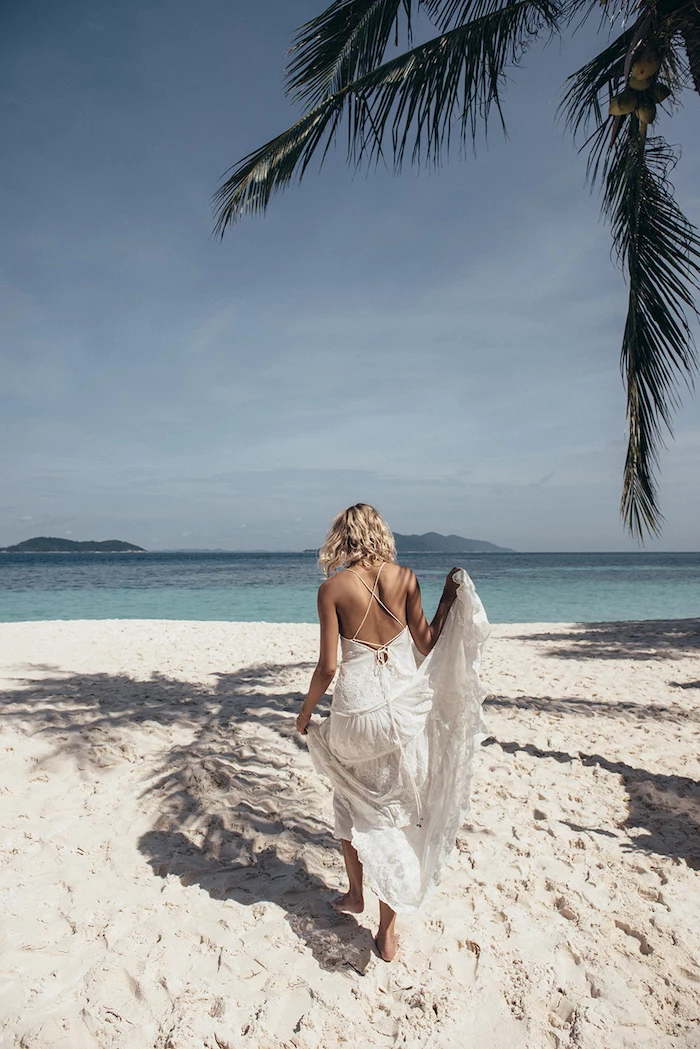
Inspirational Gallery
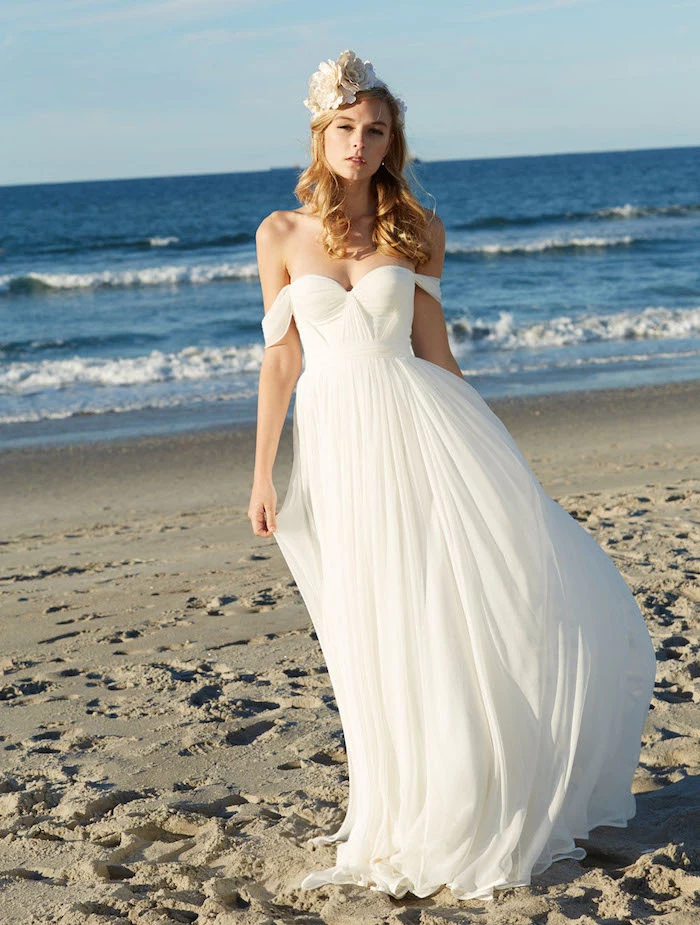
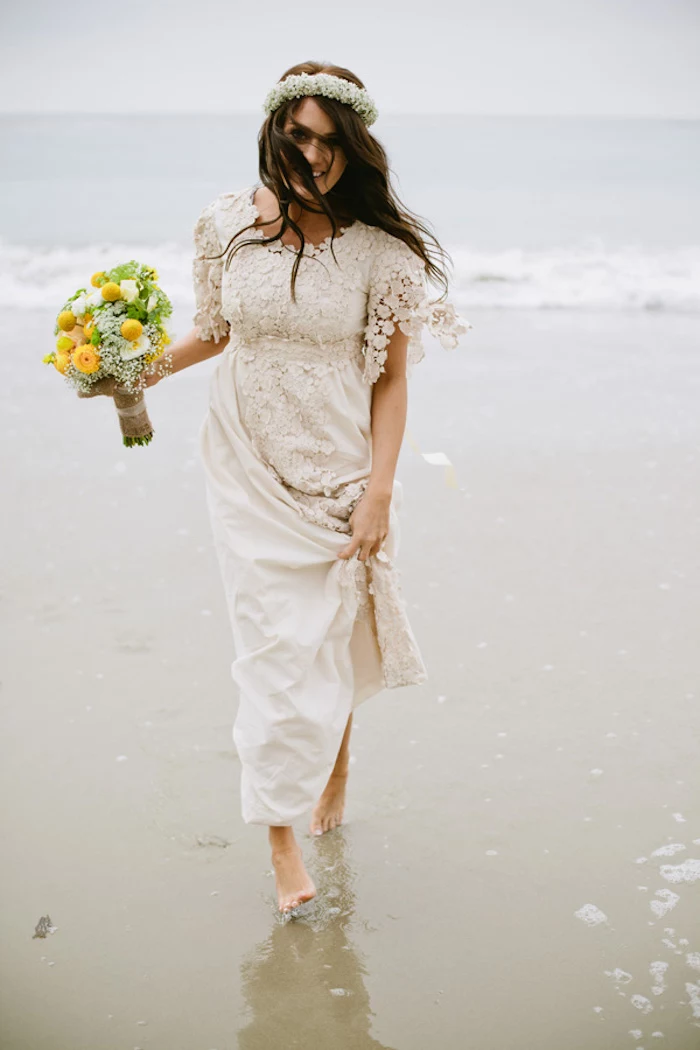


- Windproof microphone systems are a must.
- Aisle runners should be staked down securely.
- Favors should have some weight to them; think small bottles of local rum or jars of sea salt, not flimsy boxes.
The secret to keeping things in place? Gravity and preparation.
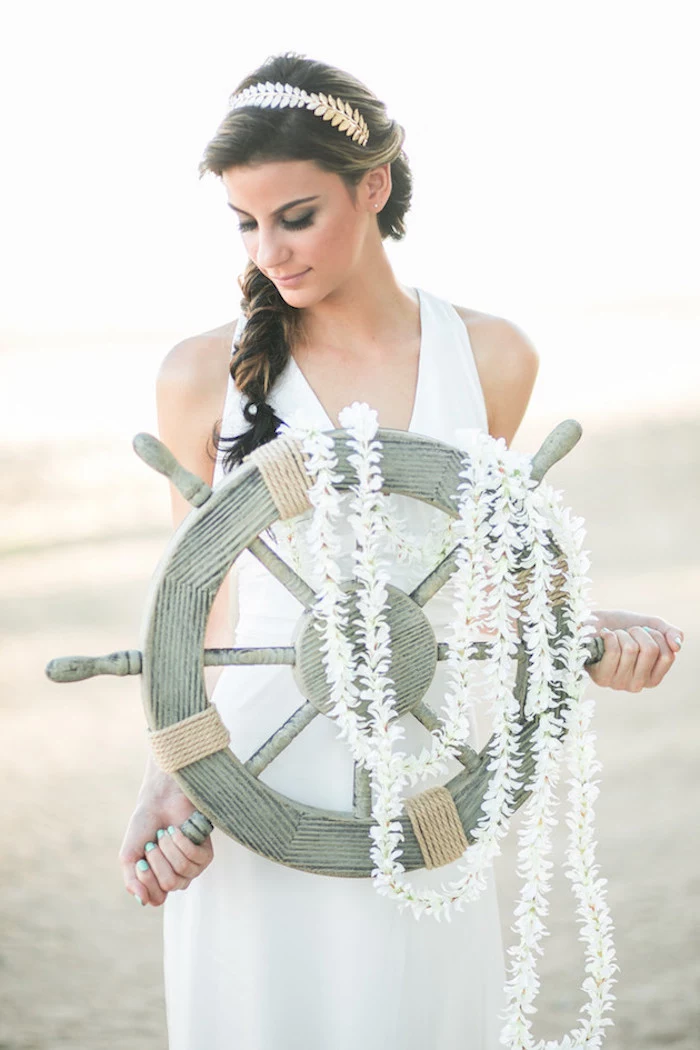
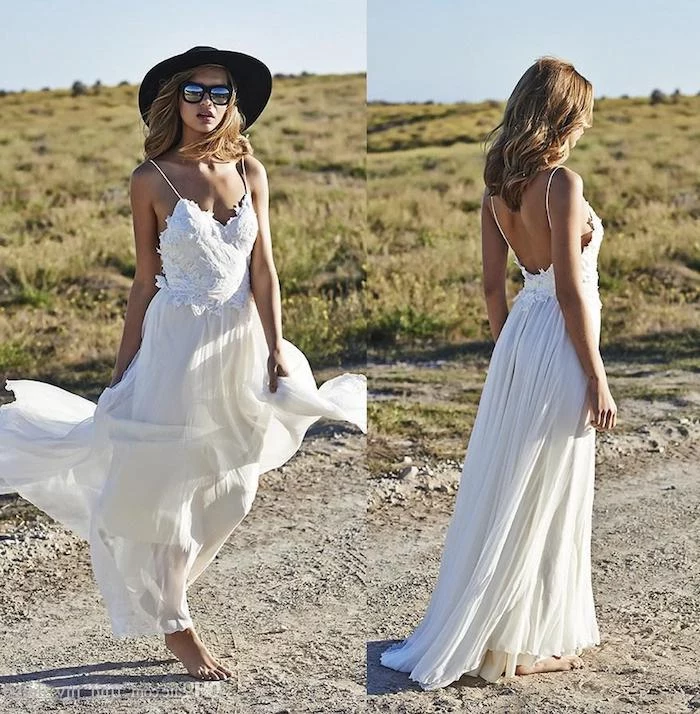

The sound of waves is romantic, but at 50 to 80 decibels, it can easily drown out human speech.
This is why investing in a quality sound system is non-negotiable. Don’t rely on a simple Bluetooth speaker. Ask your DJ or planner about professional-grade lapel mics for the officiant and couple, like those from Shure or Sennheiser, which are designed to minimize wind interference.

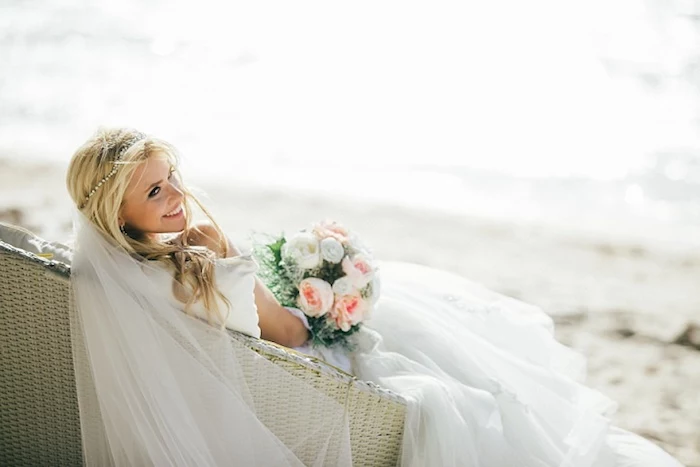
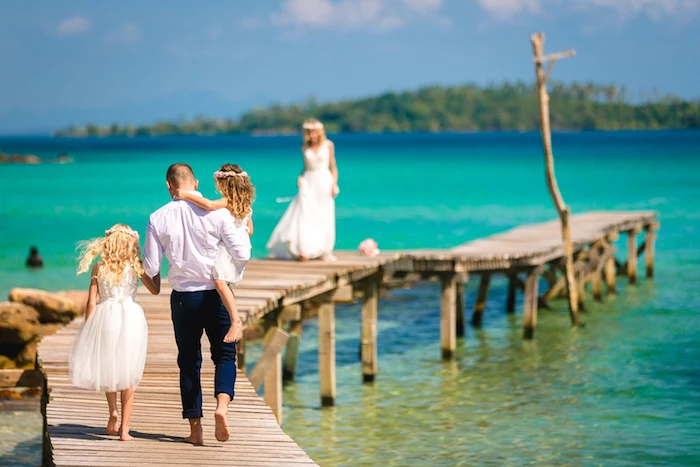
What’s the biggest enemy of a wedding cake on the beach?
Heat and humidity. A traditional buttercream-frosted cake can become a melted mess in under an hour. Opt for a cake with a sturdier fondant covering, or better yet, serve the cake indoors during the reception. Many couples now choose a small, symbolic cutting cake for photos and serve guests from sheet cakes kept cool inside.
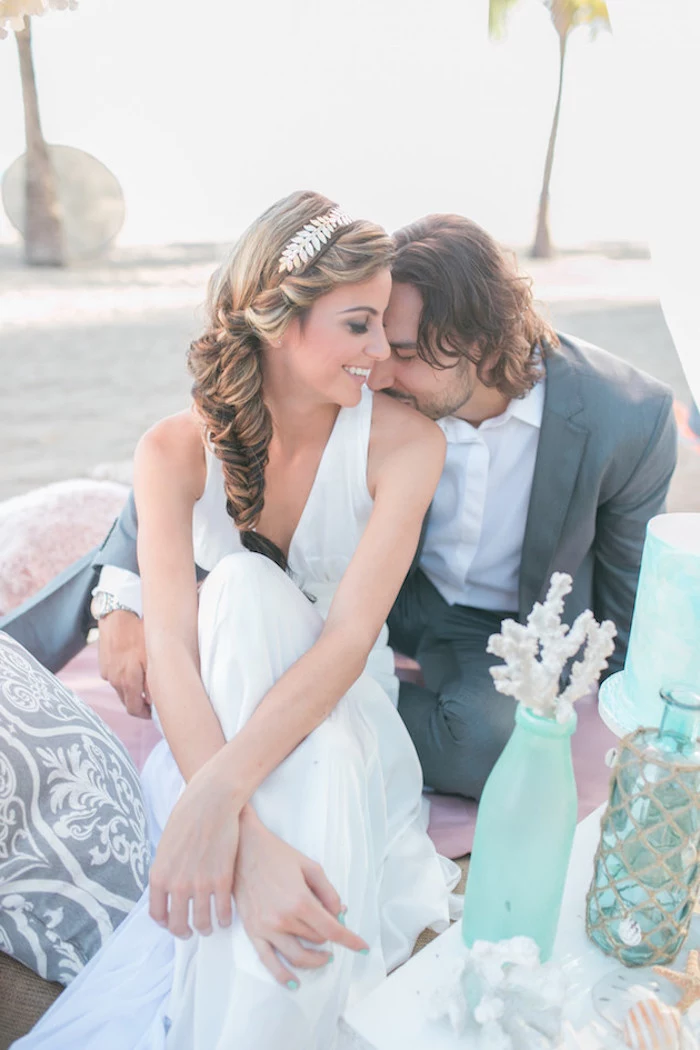
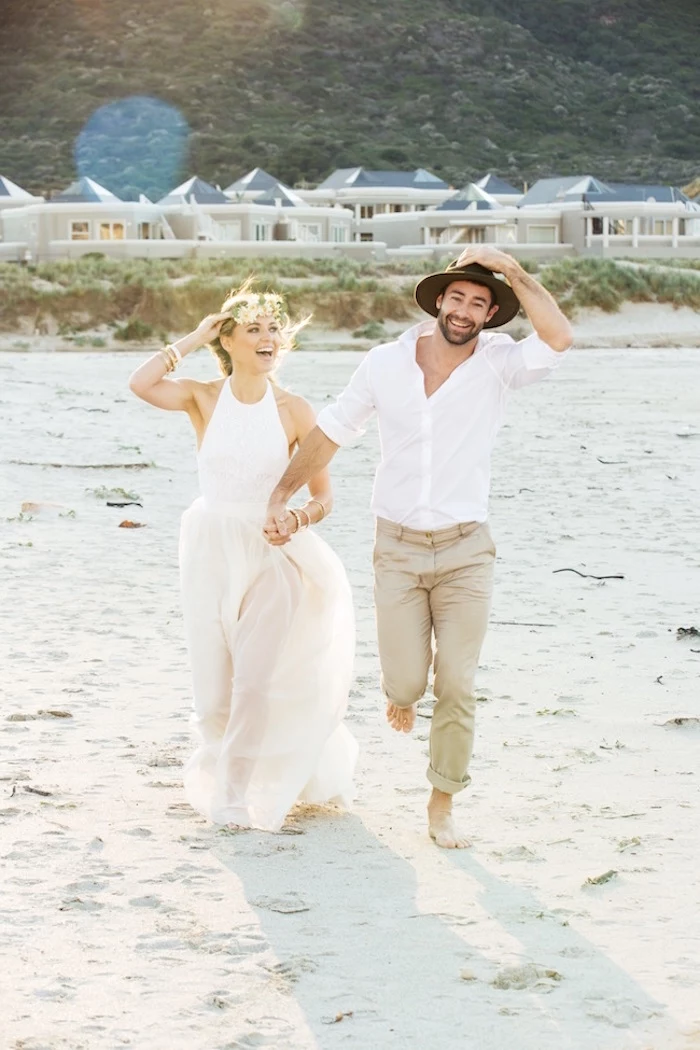
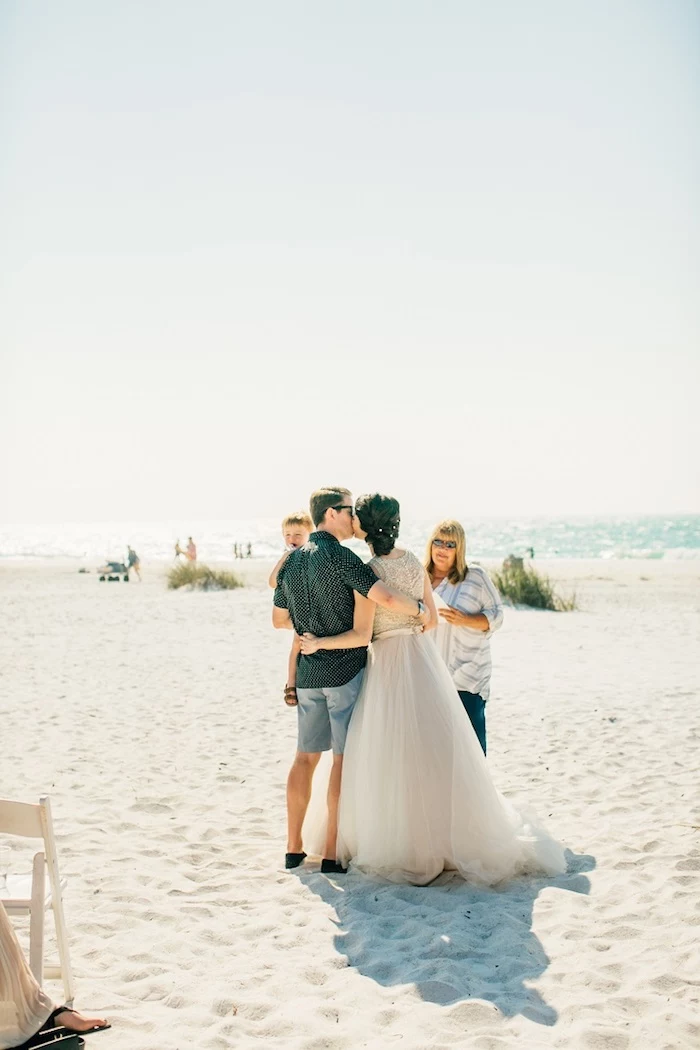
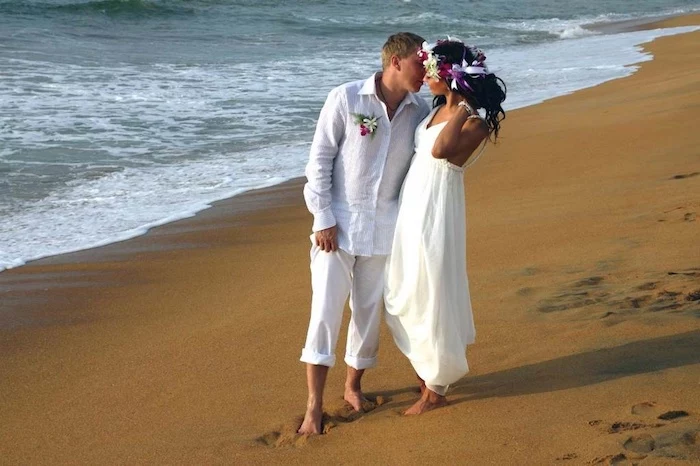
For the Groom: The choice of suit fabric is crucial for comfort and style.
Linen or a light cotton blend: Incredibly breathable, creating a relaxed yet sharp look perfect for the heat. Think brands like Suitsupply’s lightweight summer collection. It will wrinkle, but that’s part of its charm.
Heavy wool or tweed: A recipe for overheating. These fabrics are designed for insulation and will feel stifling, leading to a sweaty, uncomfortable groom. Save them for an indoor or mountain wedding.
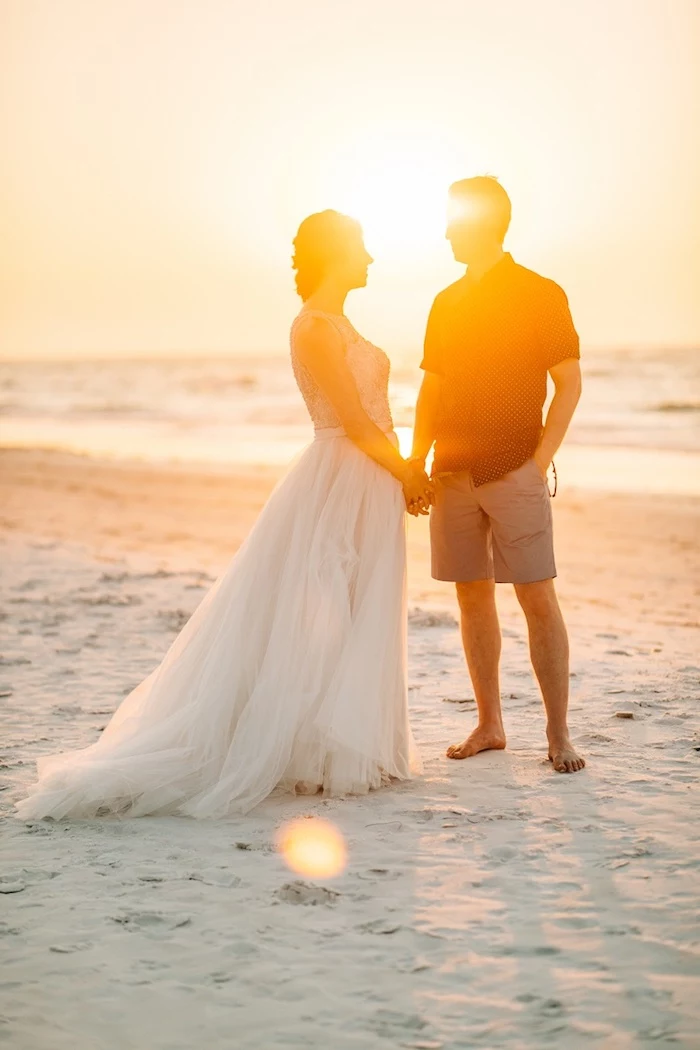
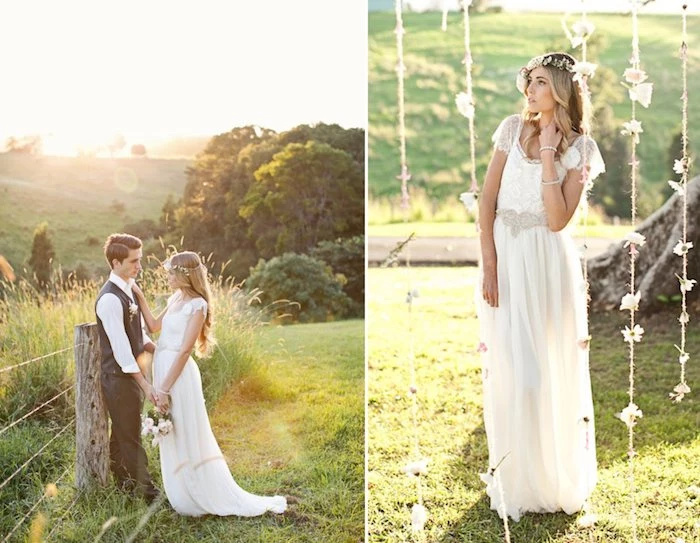
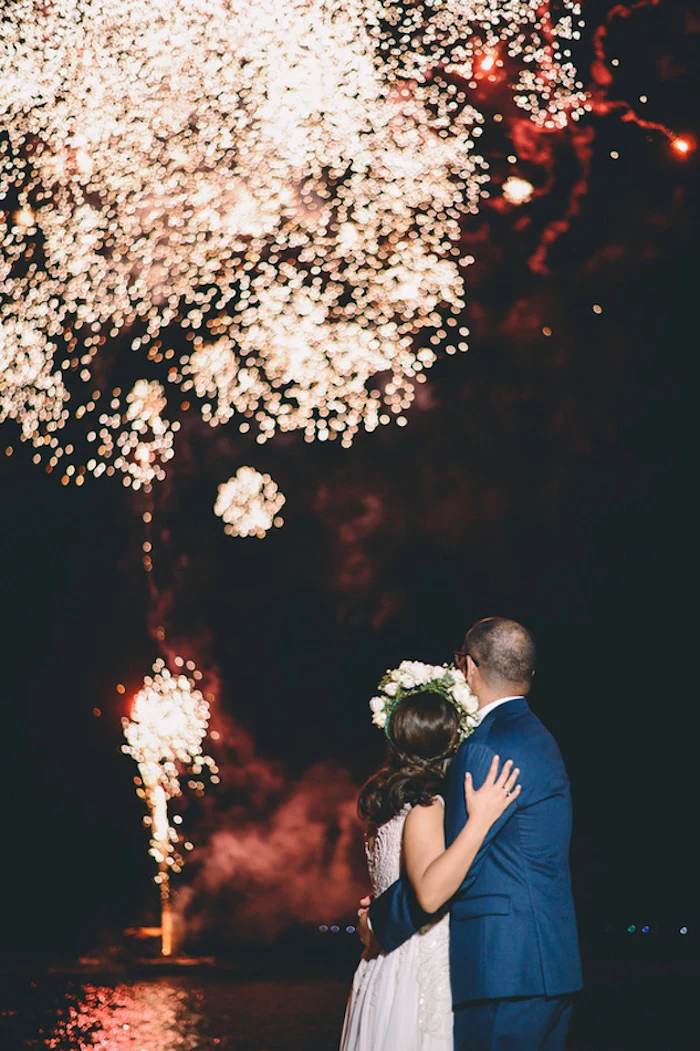
Not all flowers can handle the sun and salty air. For a bouquet and arrangements that won’t wilt before you walk down the aisle, consider these hardy beauties:
- Orchids: Especially Cymbidium and Dendrobium varieties, they are tropical natives and thrive in humidity.
- Succulents: They add a modern, structural element and are virtually indestructible in the heat.
- King Protea: This dramatic, oversized bloom is native to South Africa and makes a stunning, resilient centerpiece.
- Calla Lilies: Their waxy texture helps them retain moisture, making them surprisingly durable.
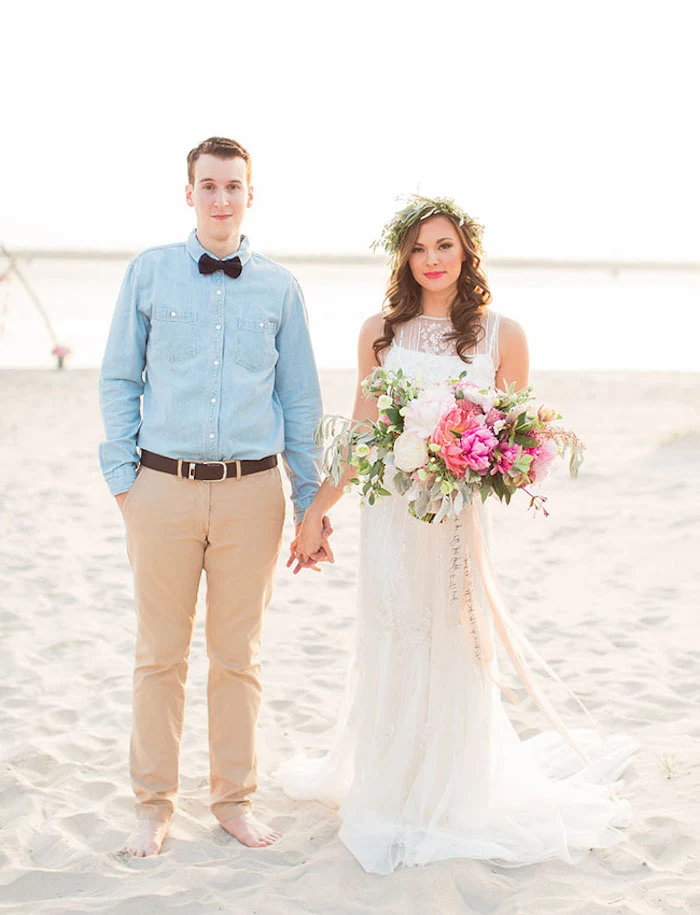

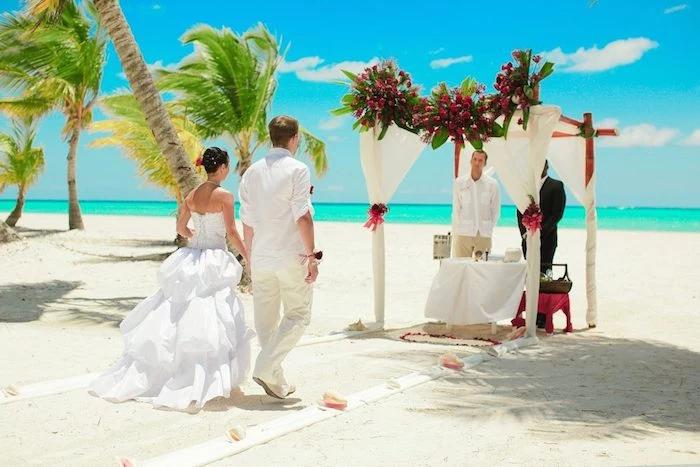
Even a light 10 mph breeze can feel significant on an open coastline, making unsecured veils, napkins, and place cards take flight.
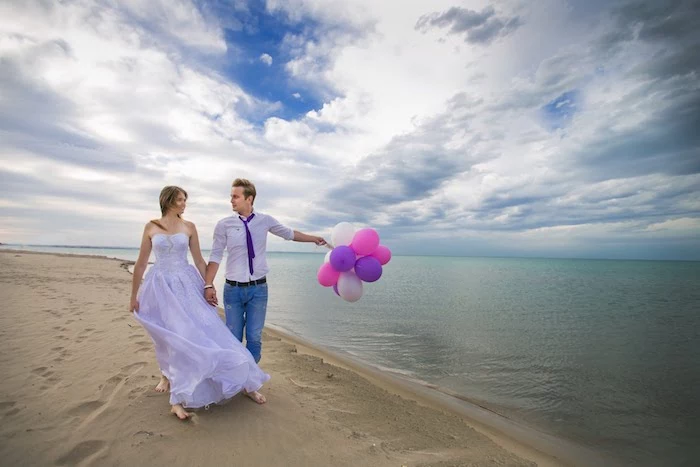
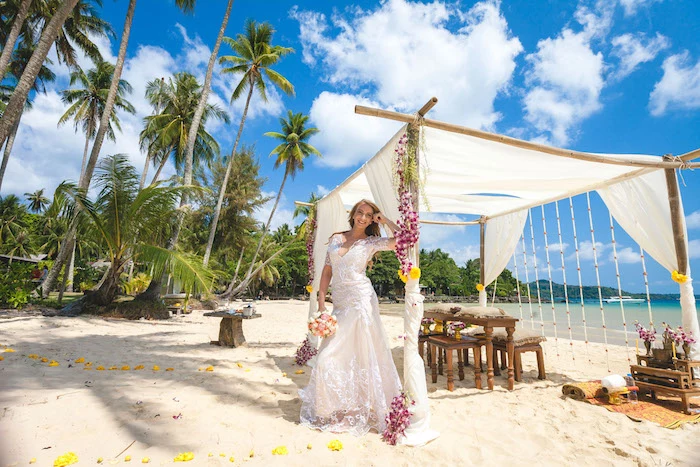
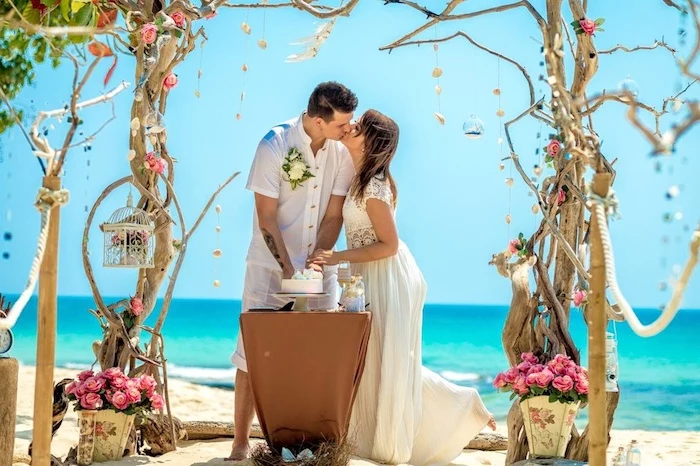
Important point: Your guests’ comfort is paramount. Create a welcome station that’s both beautiful and practical. Fill a rustic wooden crate or a large wicker basket with essentials like travel-sized bottles of reef-safe sunscreen (like Supergoop! or Sun Bum), paper fans, and small towels for wiping sandy feet.
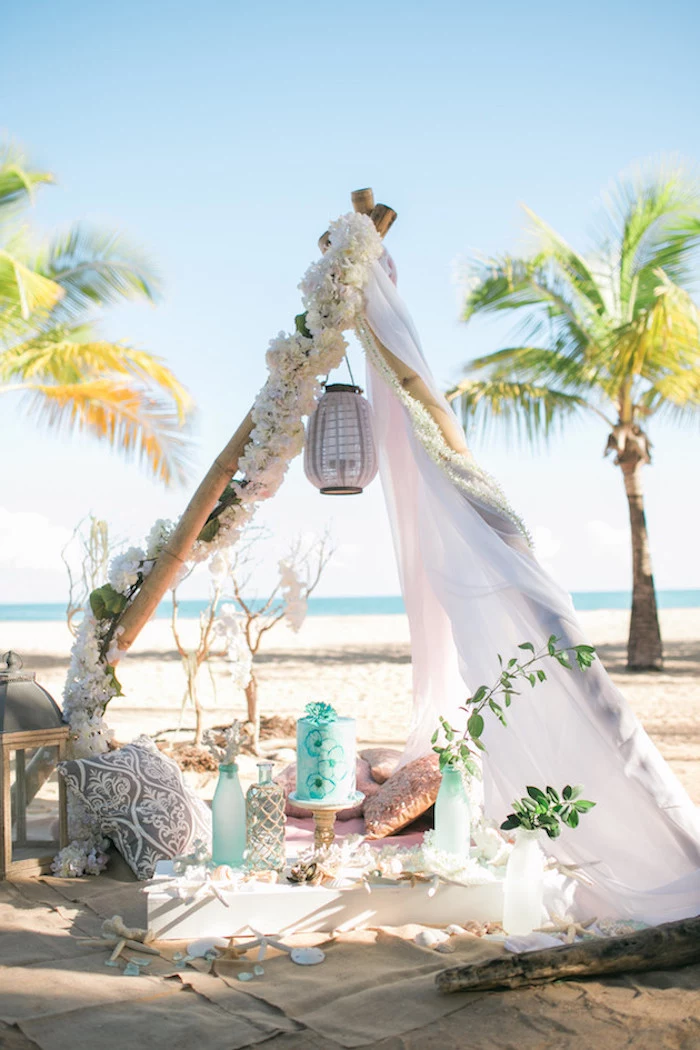
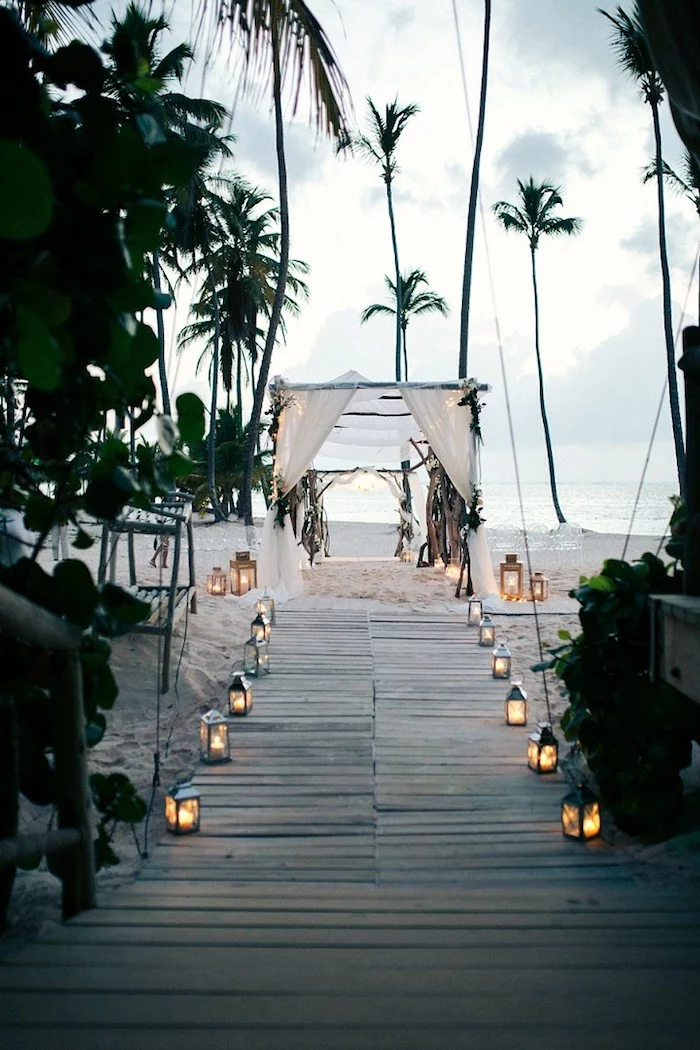
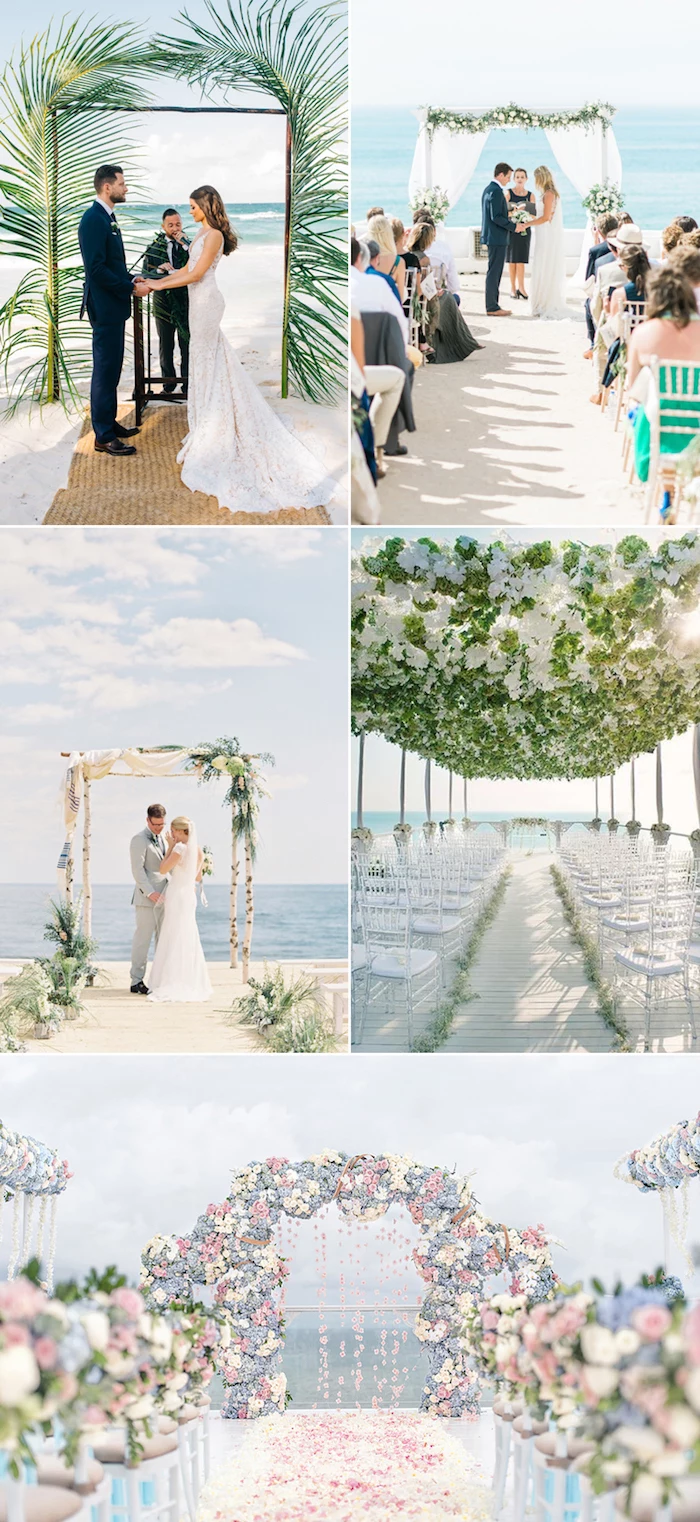
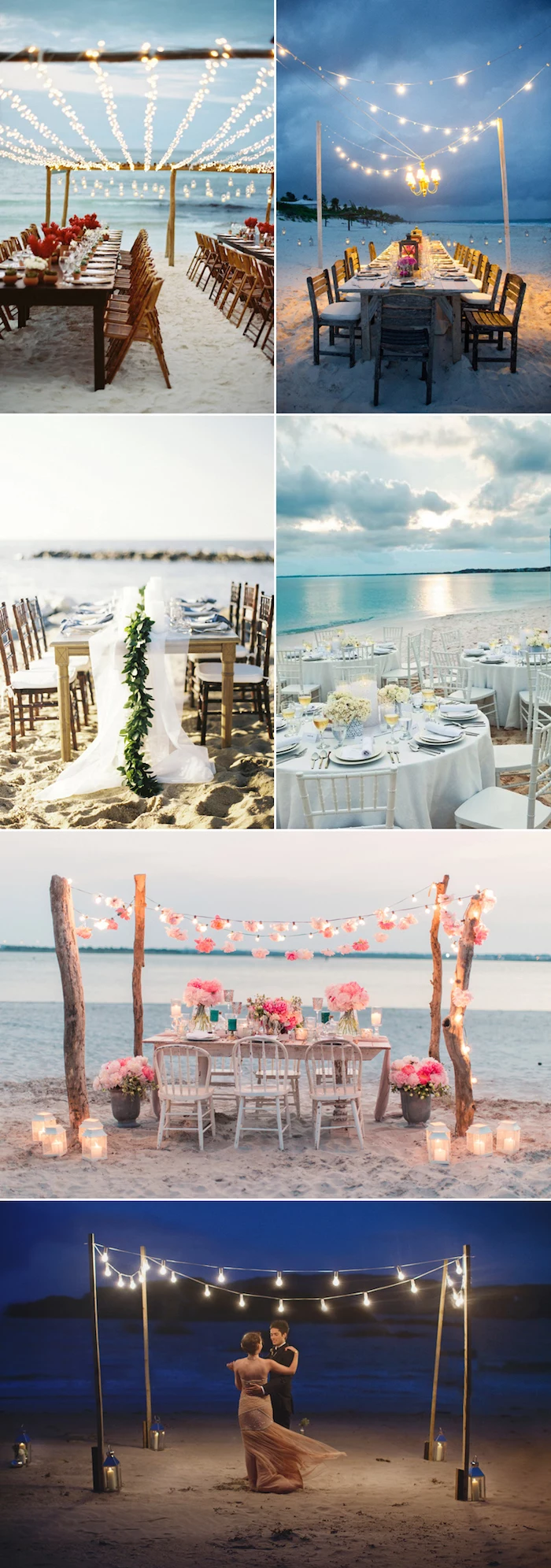
Let the environment inspire your color palette. Instead of competing with the natural beauty, complement it. Think of the soft neutrals of sand and driftwood, the deep teals of the water, the vibrant coral of a sunset, and the lush green of palm fronds. These colors create a cohesive, organic feel.
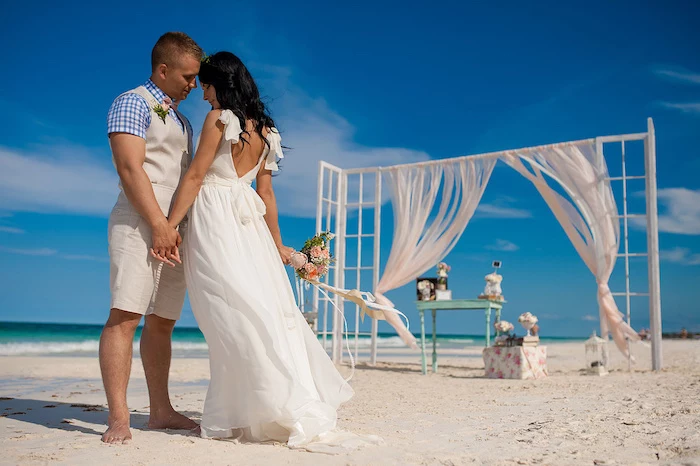
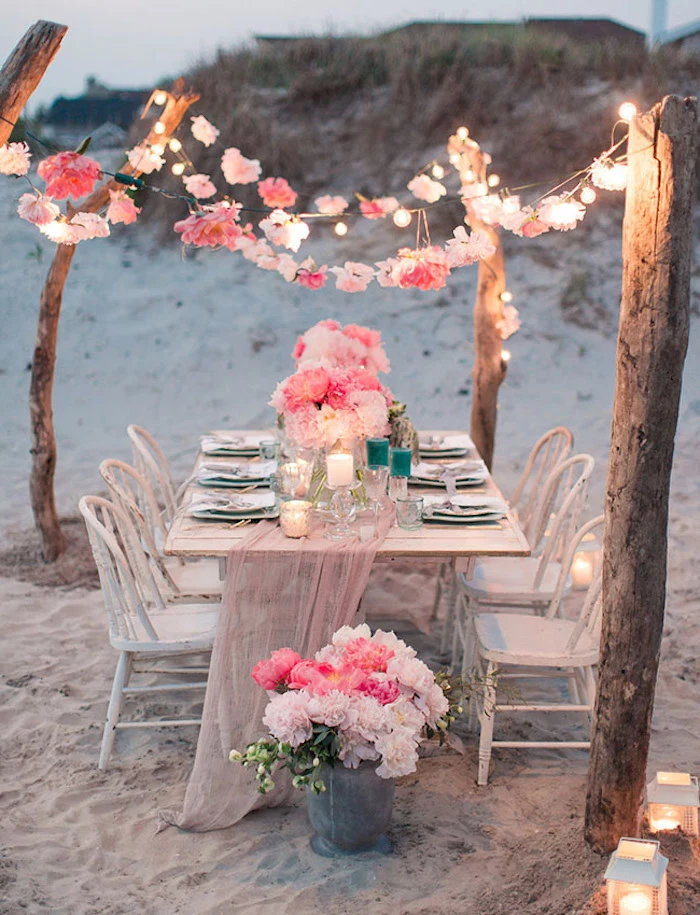
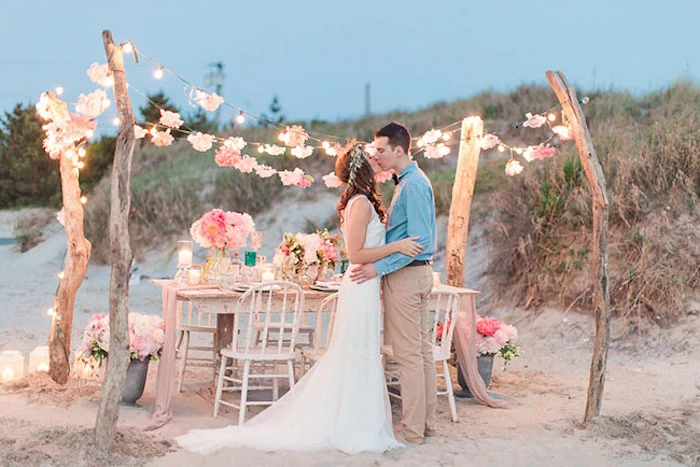
- It withstands wind without flapping or getting tangled.
- It keeps hair off your face for photos and the ceremony.
- It holds up better against humidity than loose curls.
The secret? A chic, slightly undone updo or a sophisticated braided crown. It’s the most practical and elegant hairstyle for a beach setting.
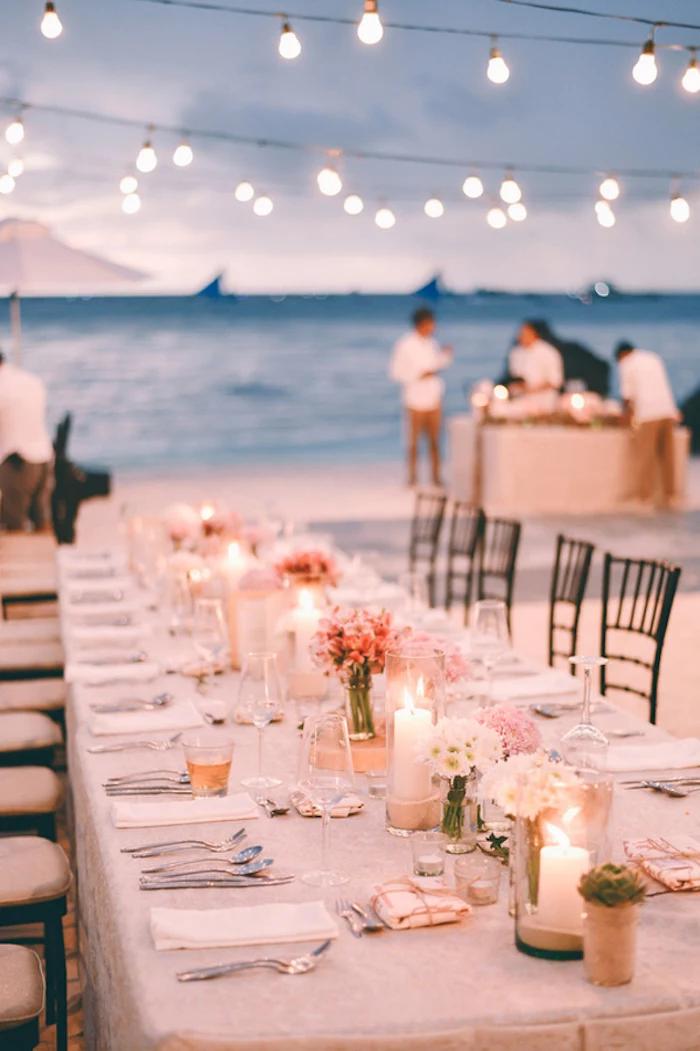
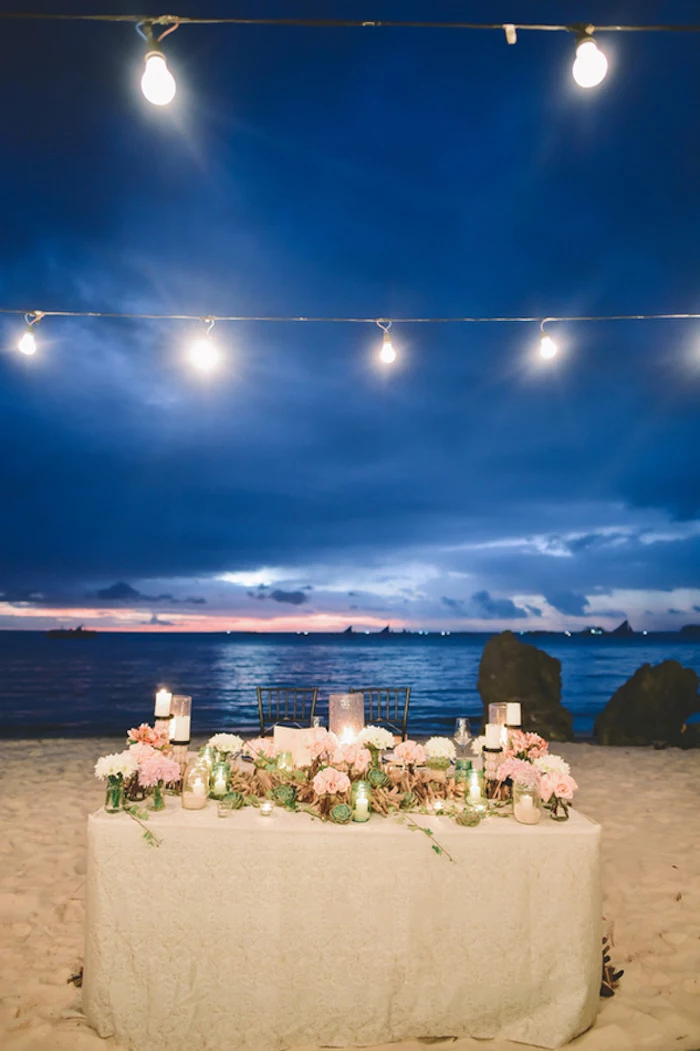
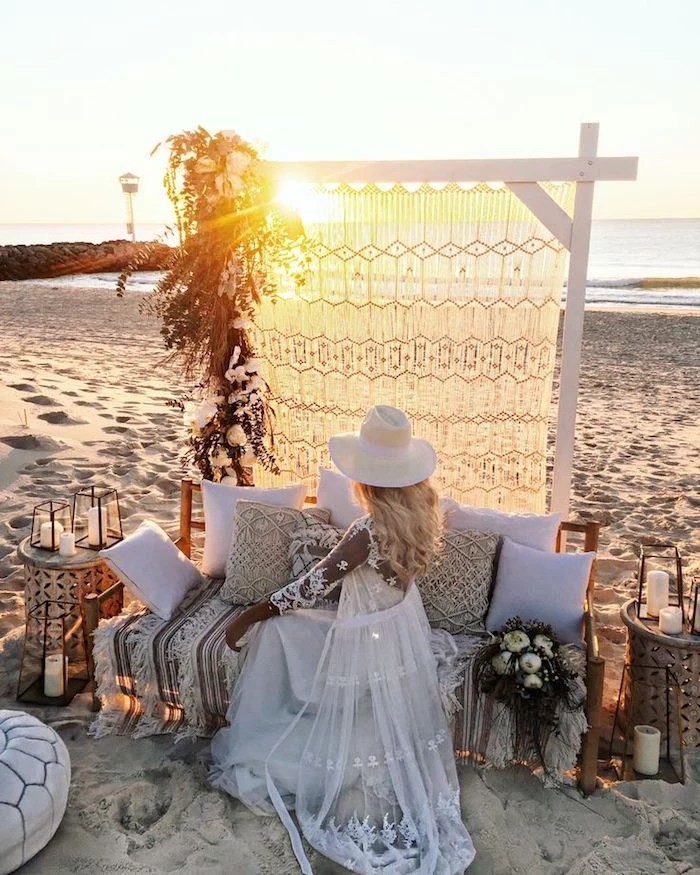
Do we really need a permit for a public beach?
Almost always, yes. Most public beaches require special event permits, especially for a group of any size, and often have strict rules about setup, noise levels, and cleanup. Applying for a permit well in advance is a critical step to avoid having your ceremony shut down by local authorities. Don’t assume you can just show up.
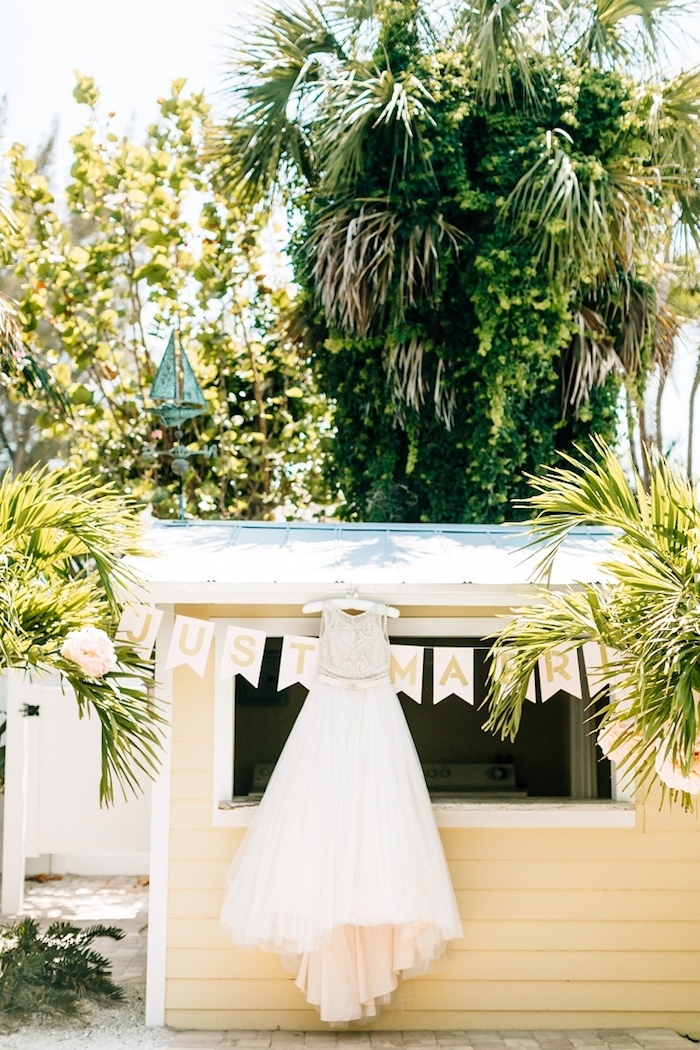
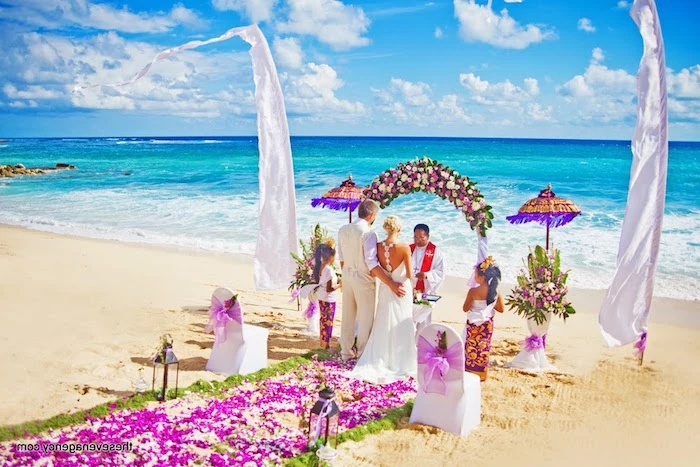
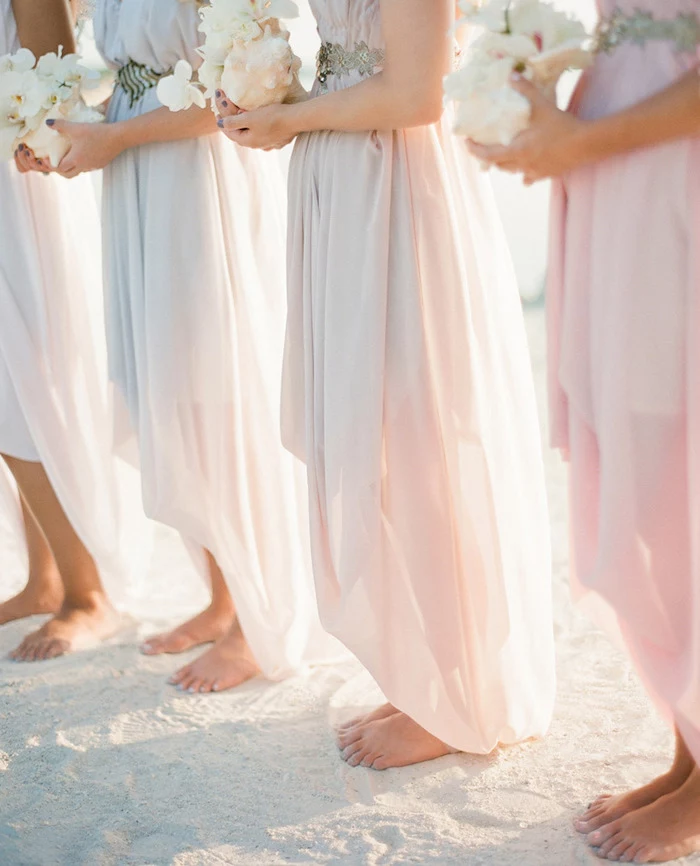
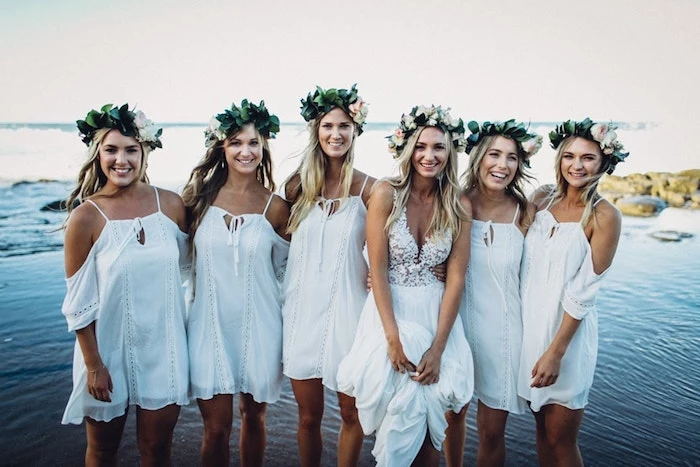
The average wedding produces 400 lbs of garbage and 63 tons of CO2. – The Green Bride Guide
A beach wedding is a perfect opportunity to minimize your impact. Choose biodegradable confetti like flower petals, rent decorations instead of buying, and ensure your catering team has a robust recycling and composting plan. A
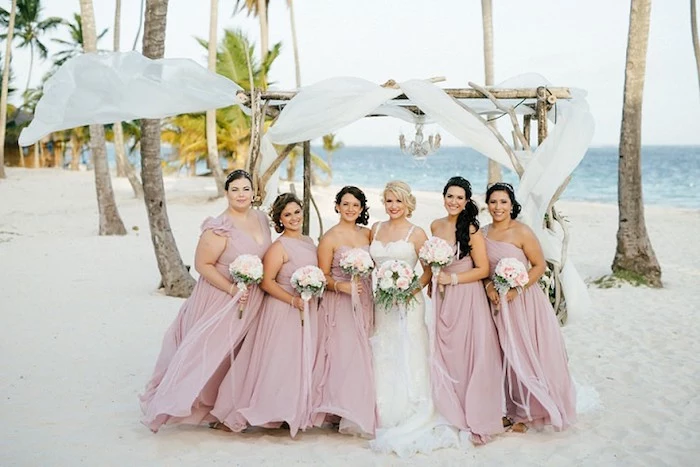

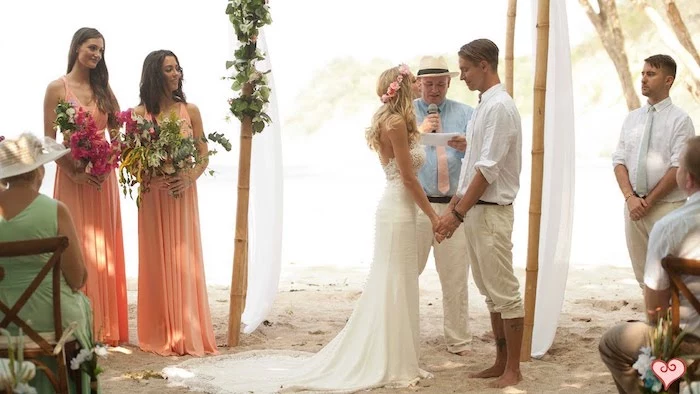
Acrylic Signage: Sleek, modern, and heavy enough to resist the wind. The transparency allows the beach backdrop to shine through, making it a popular choice for welcome signs and seating charts.
Paper & Cardstock: Prone to being blown away unless secured in heavy frames. It can also be damaged by unexpected sea spray or humidity, causing ink to run or the paper to warp.
For peace of mind and style, acrylic is the clear winner for beach settings.
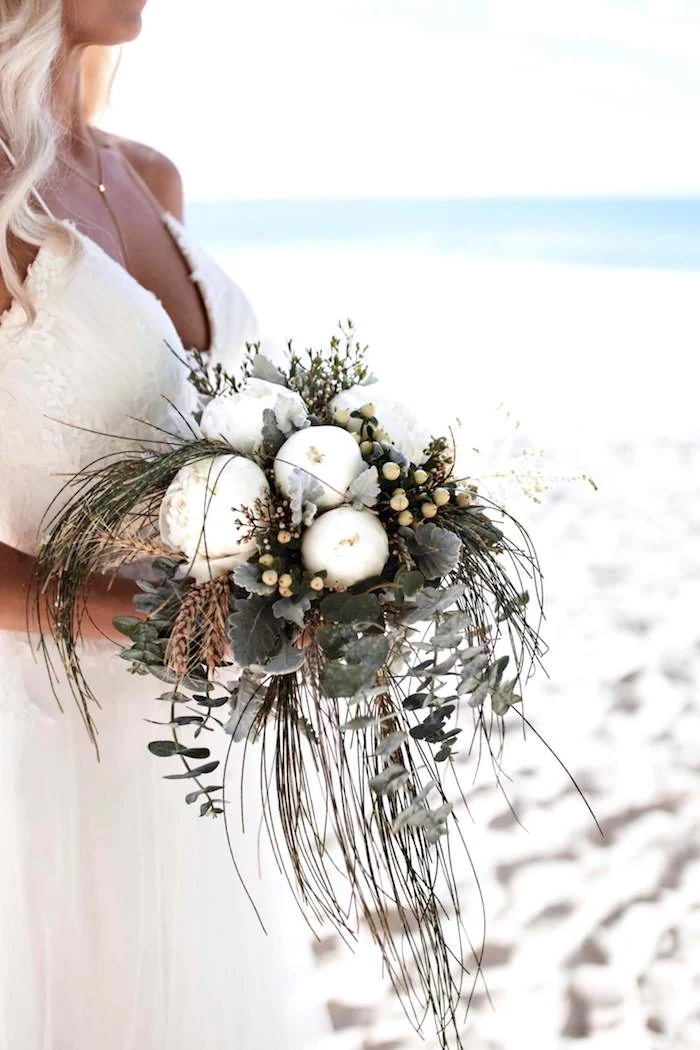
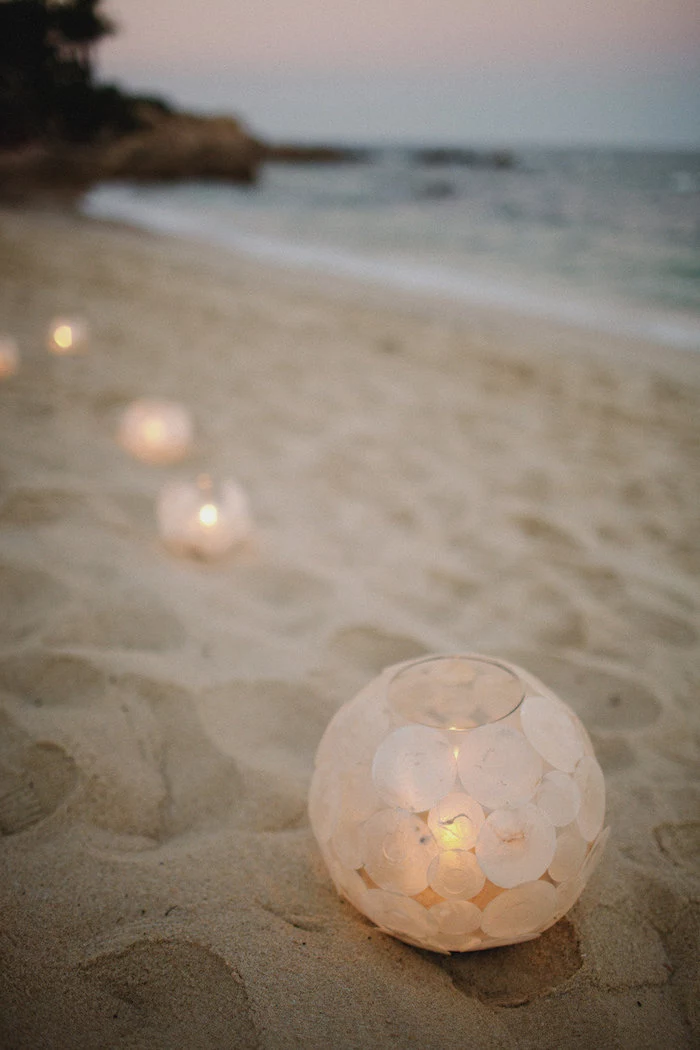
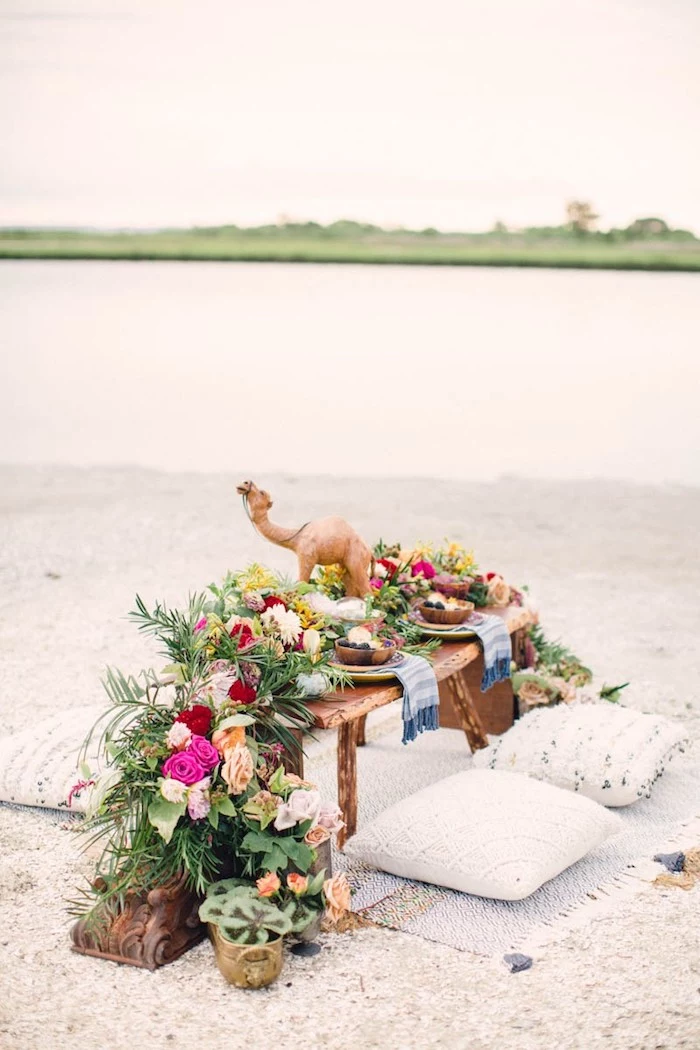
Consider a
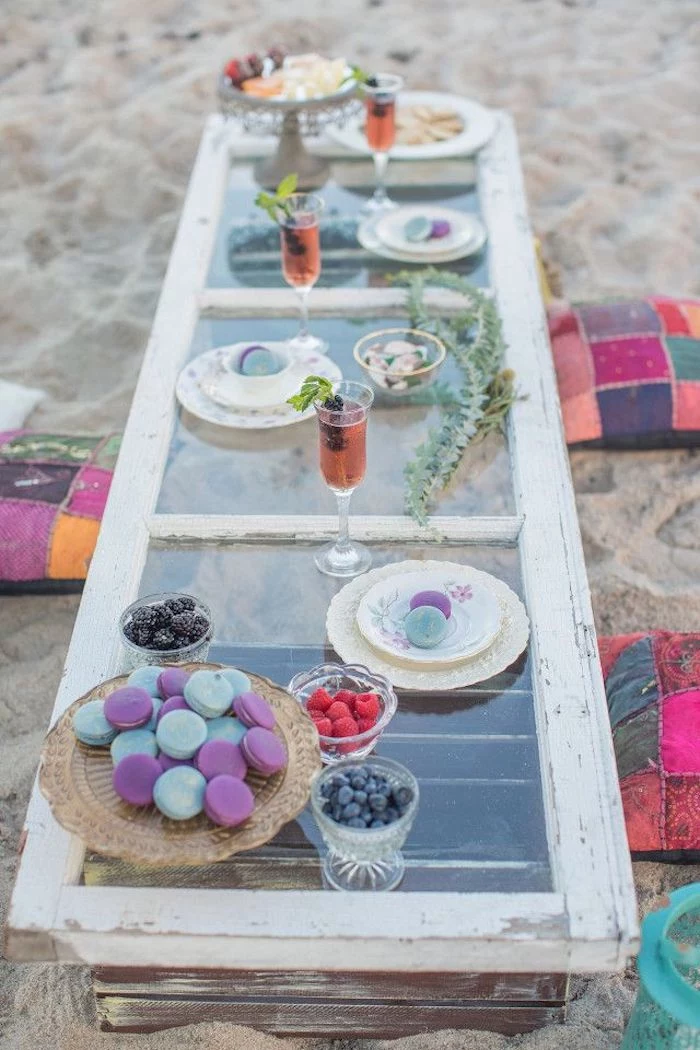
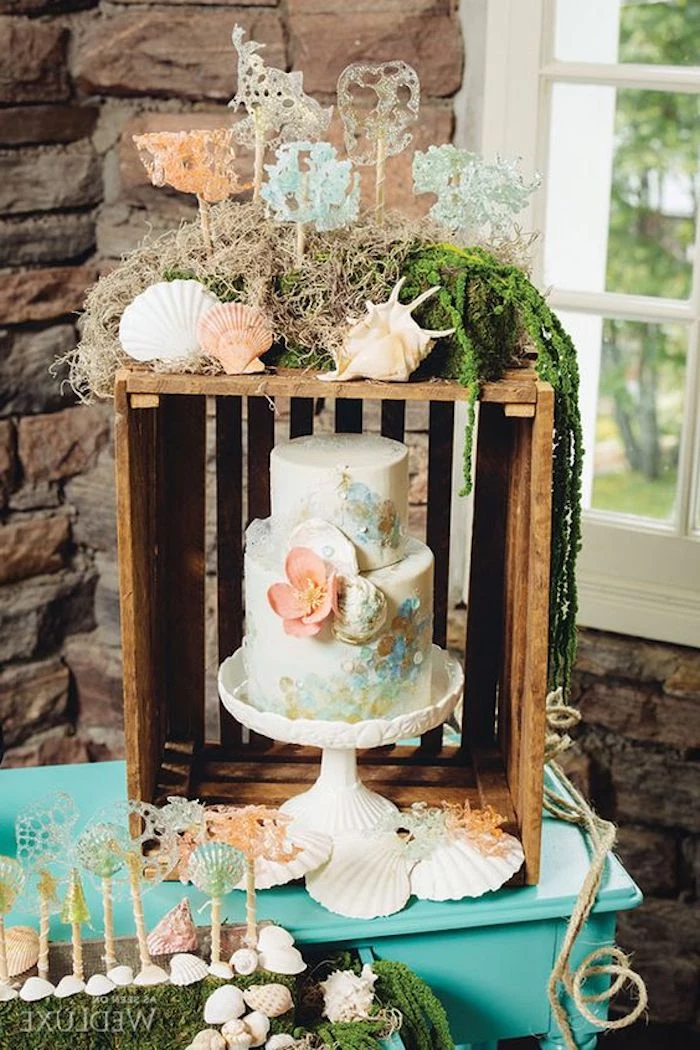
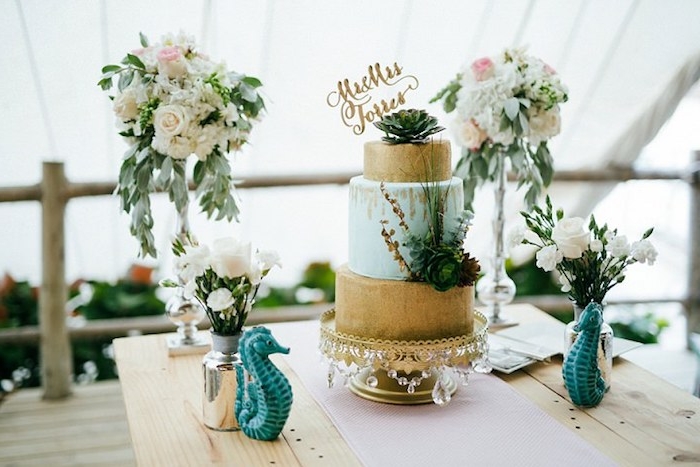
Don’t forget the lighting. As the sun goes down, the beach becomes pitch black. For a magical transition from sunset ceremony to evening celebration, you need a plan. String lights or café bulbs can be draped between posts (staked deep in the sand!), while solar-powered lanterns can illuminate pathways. Uplighting on palm trees can also create a dramatic, resort-like atmosphere.
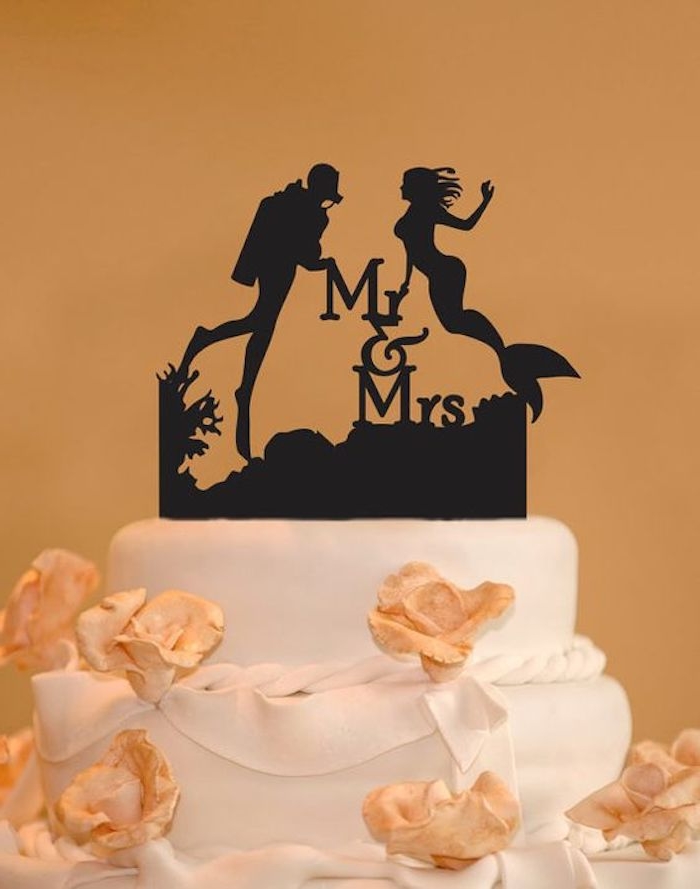
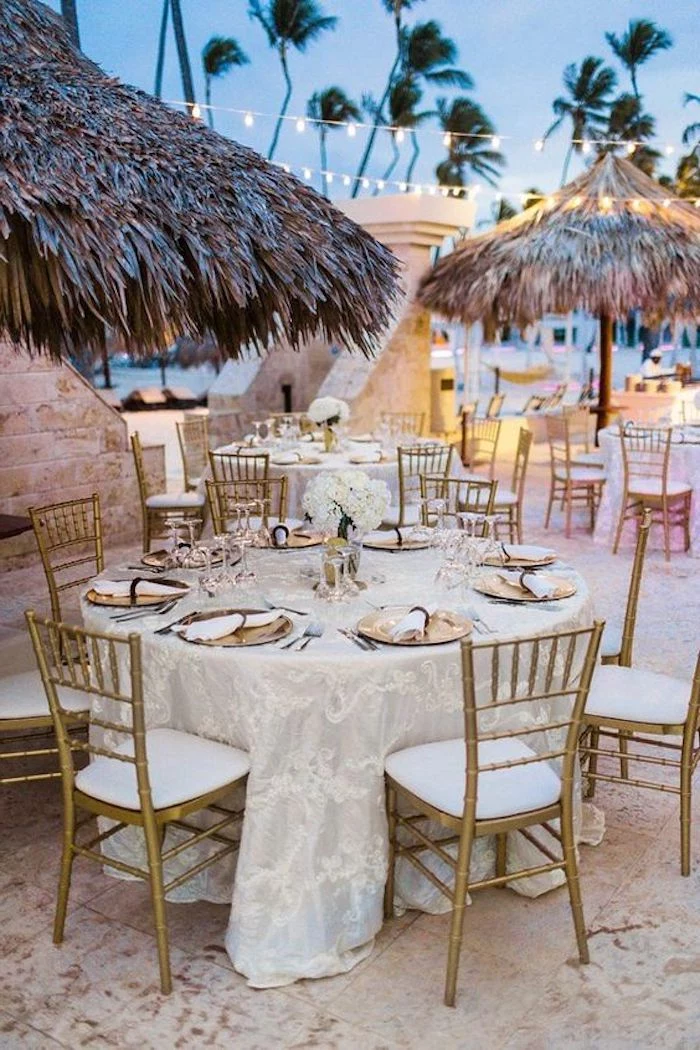
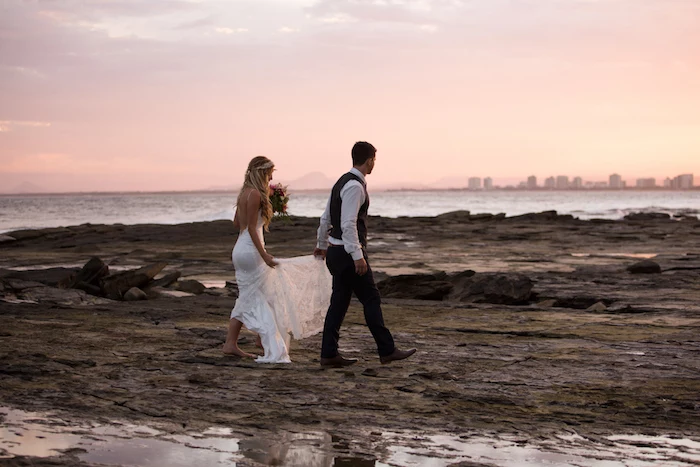
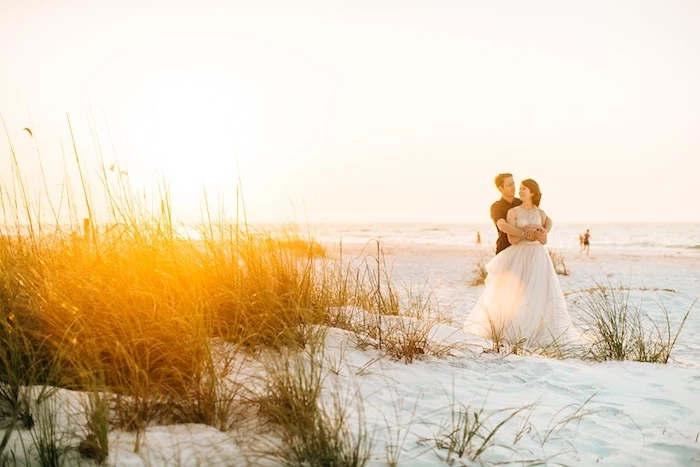
Ditch the floral centerpieces that can wilt or topple in the wind. Instead, use a collection of hurricane vases filled with sand, seashells, and a single pillar candle. You can also incorporate driftwood, colorful sea glass, or even clusters of coral (sustainably sourced, of course) for a look that’s both beautiful and beach-proof.
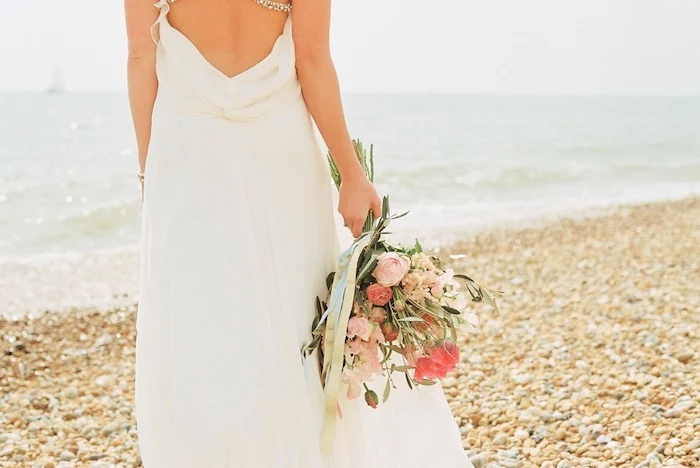


A critical detail: Your makeup. Go for a professional application with an emphasis on endurance. Waterproof mascara, like Dior’s Diorshow Iconic Overcurl Waterproof, is an absolute must. An airbrush foundation will hold up better against humidity and sweat than traditional formulas, and a good setting spray, like Urban Decay’s All Nighter, will be your best friend.
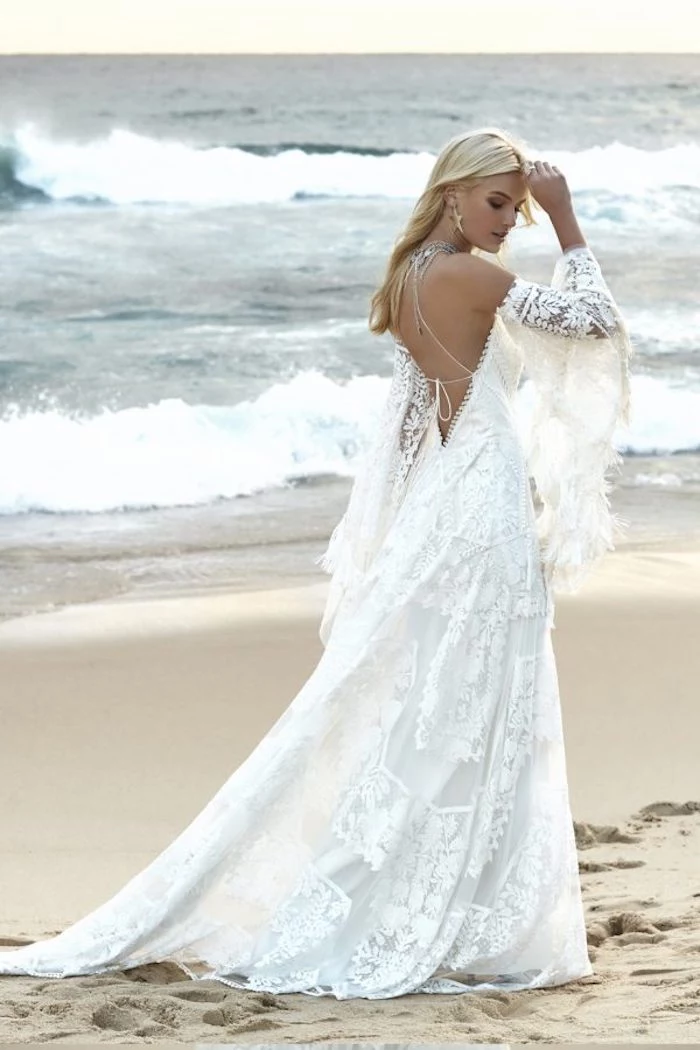


What about bugs at dusk?
It’s a reality, especially near dunes or mangroves. Sand flies and mosquitoes love a good sunset gathering. You can manage them by having elegant citronella torches or thermacell diffusers strategically placed around the perimeter of your reception area. Also, consider including chic, personal-sized bug repellents in your guest welcome baskets.
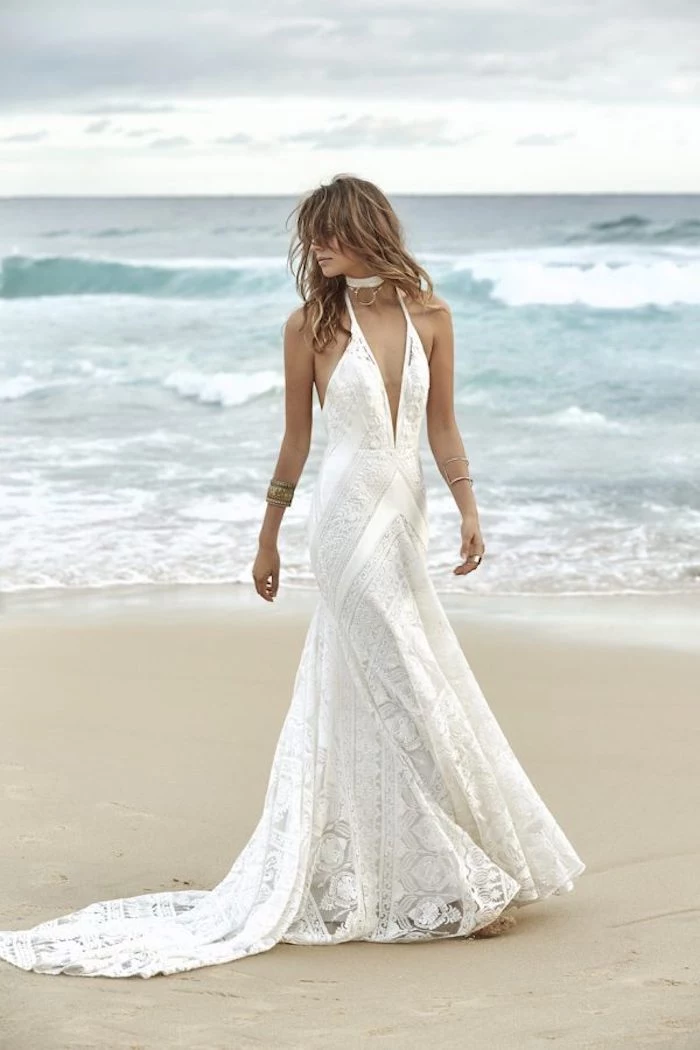


- A pre-arranged indoor or tented backup location.
- Clear communication plan to inform guests of a change.
- Tents must be professionally installed and rated for high winds.
- Umbrellas for guests during a light shower.
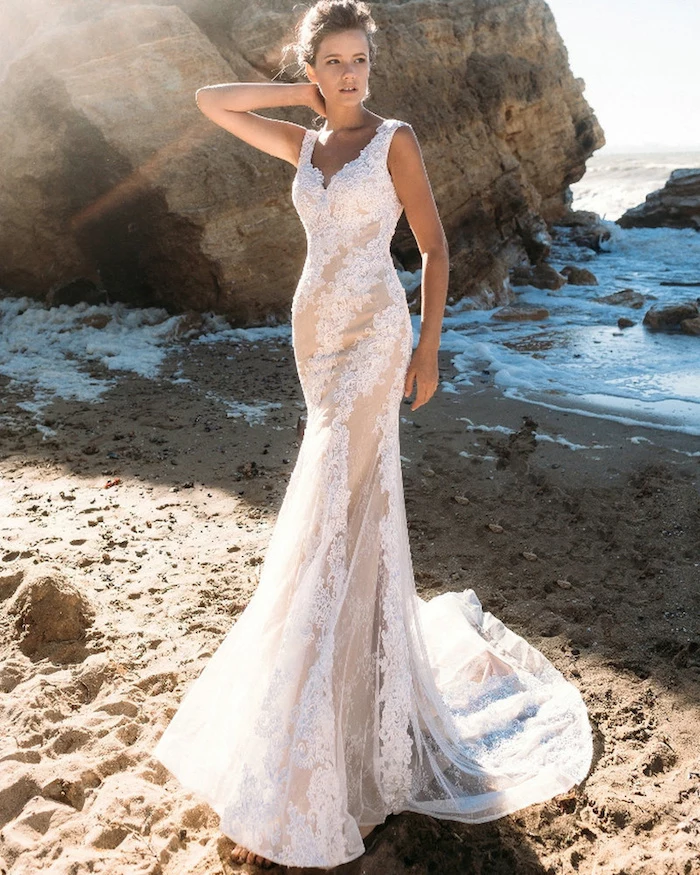



Embrace the sounds of the shore. While you’ll need microphones for the ceremony, let the natural soundtrack shine during cocktail hour. The rhythm of the waves is inherently relaxing. Supplement it with a live steel drummer or a solo acoustic guitarist playing light, breezy tunes rather than a loud, bass-heavy playlist that competes with the environment.

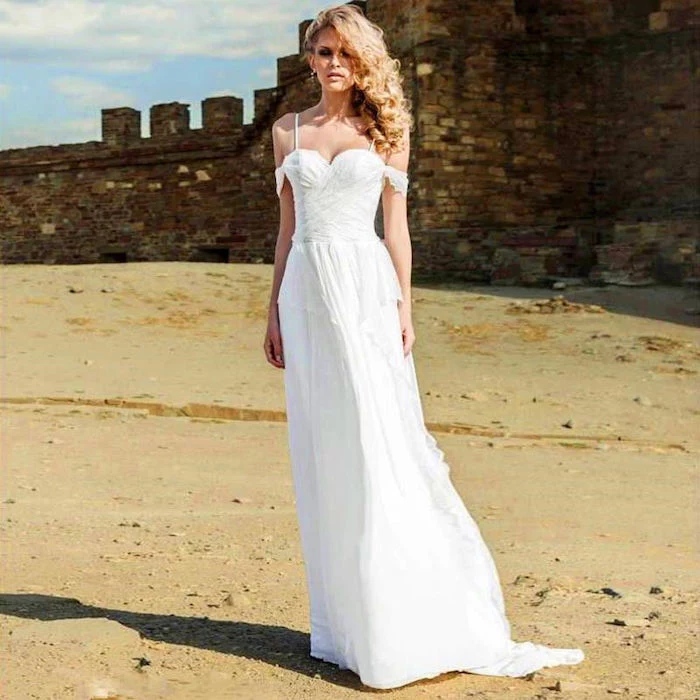

A single grain of sand is between 0.06 and 2 millimeters in diameter, making it small enough to get into absolutely everything.
Prepare for this! Have a designated person ready with a small, soft brush to dust sand off camera lenses. Advise your caterer to keep all food covered until the moment it’s served. And for your own sanity, accept that you will find sand in your belongings for weeks—it’s part of the memory.

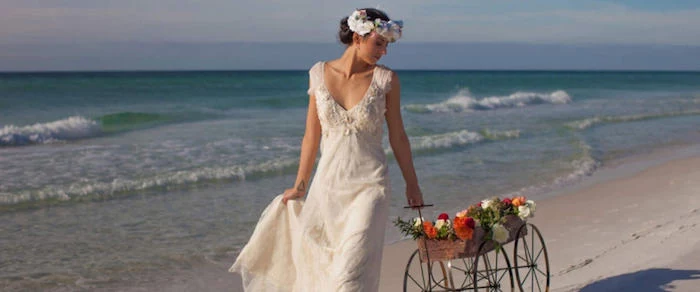

Capture your venue’s epic scale with drone photography. A skilled drone operator can get breathtaking aerial shots of your ceremony setup, the coastline, and you and your partner walking along the water’s edge. These images provide a stunning, cinematic perspective that traditional photography simply can’t match. Just be sure to check local regulations first, as some beaches have restrictions.

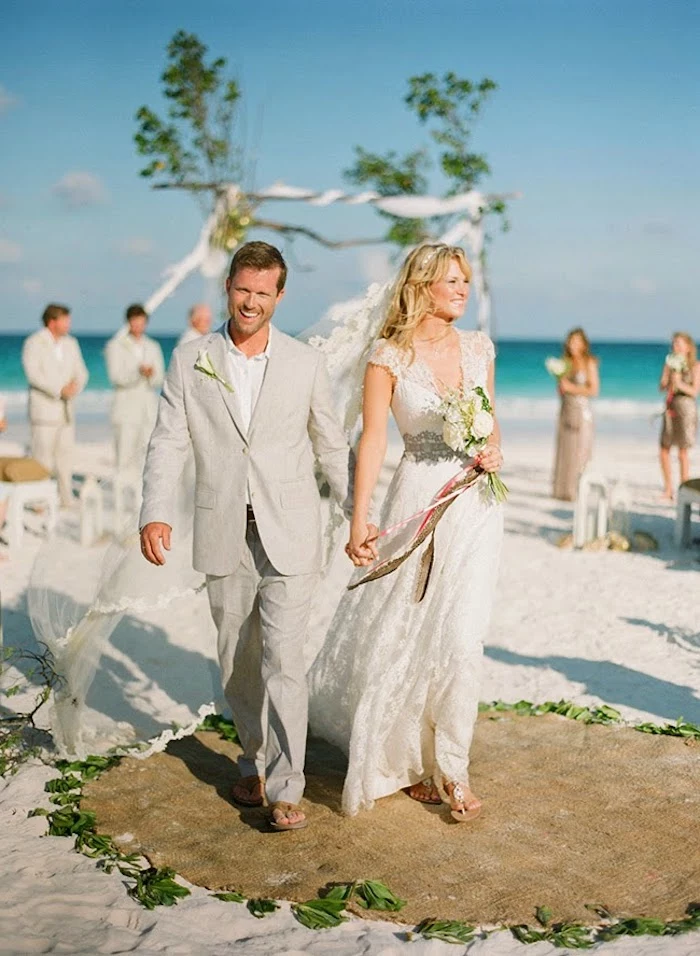
Signature Cocktail Tip: Go for something light and refreshing, not heavy and creamy. A spicy margarita with a chili-salt rim or a gin-based cocktail with elderflower and grapefruit, like a










